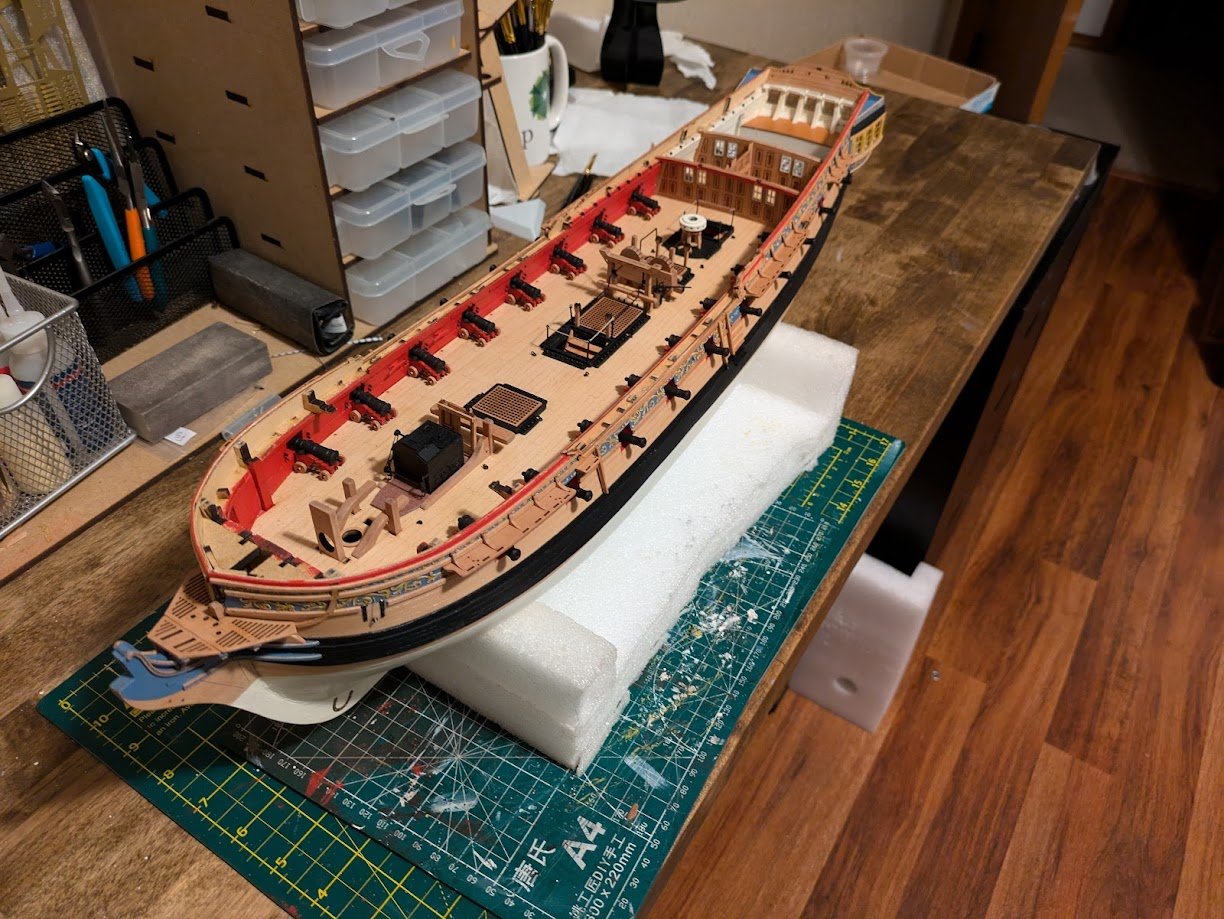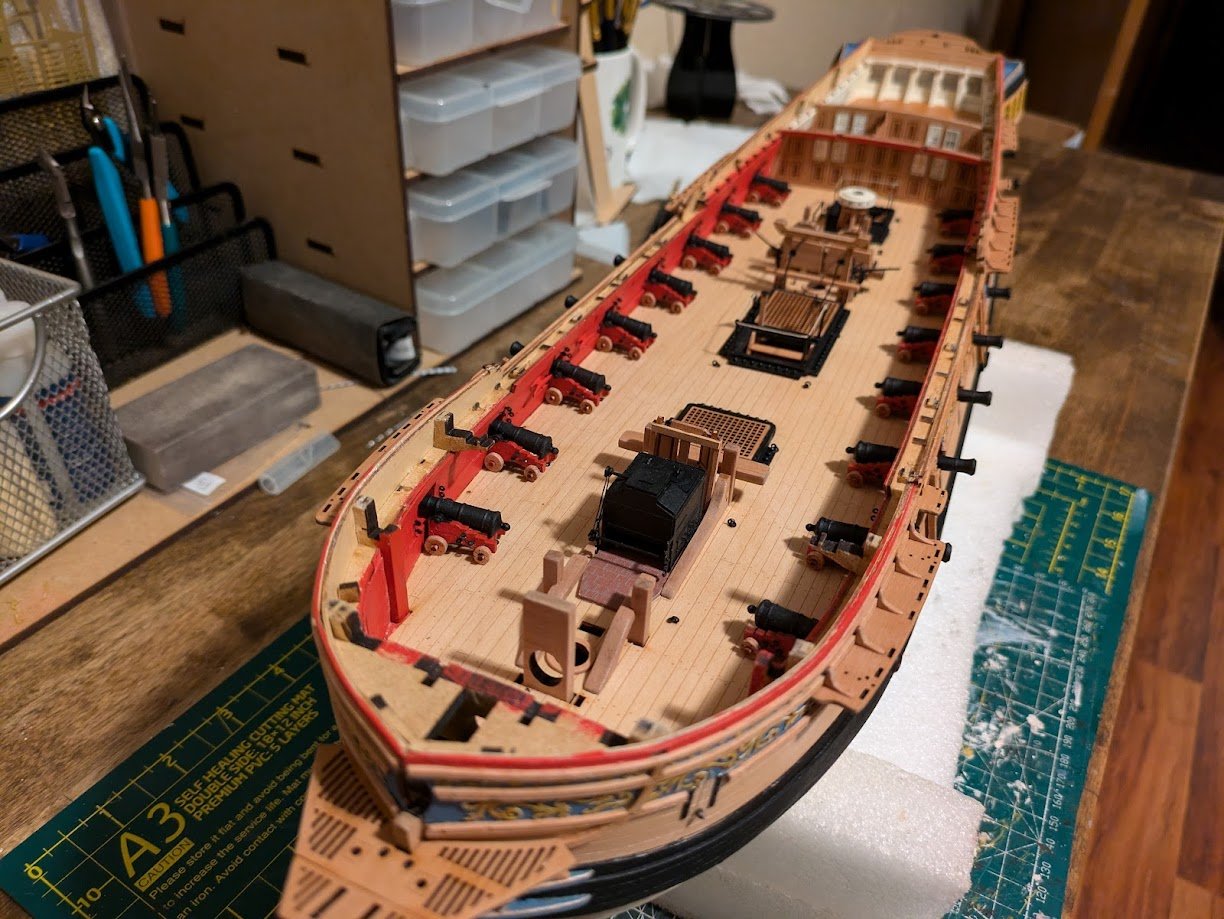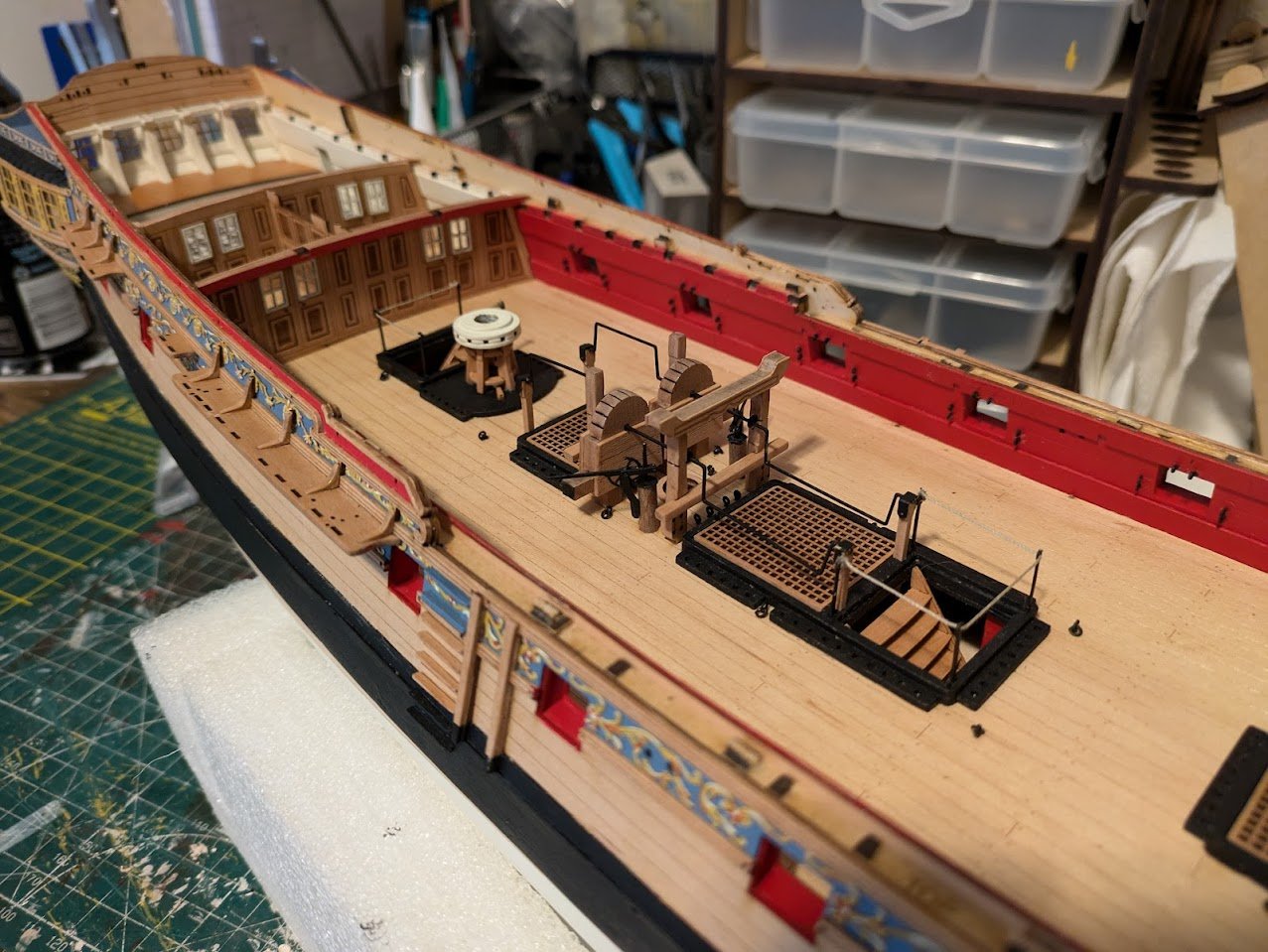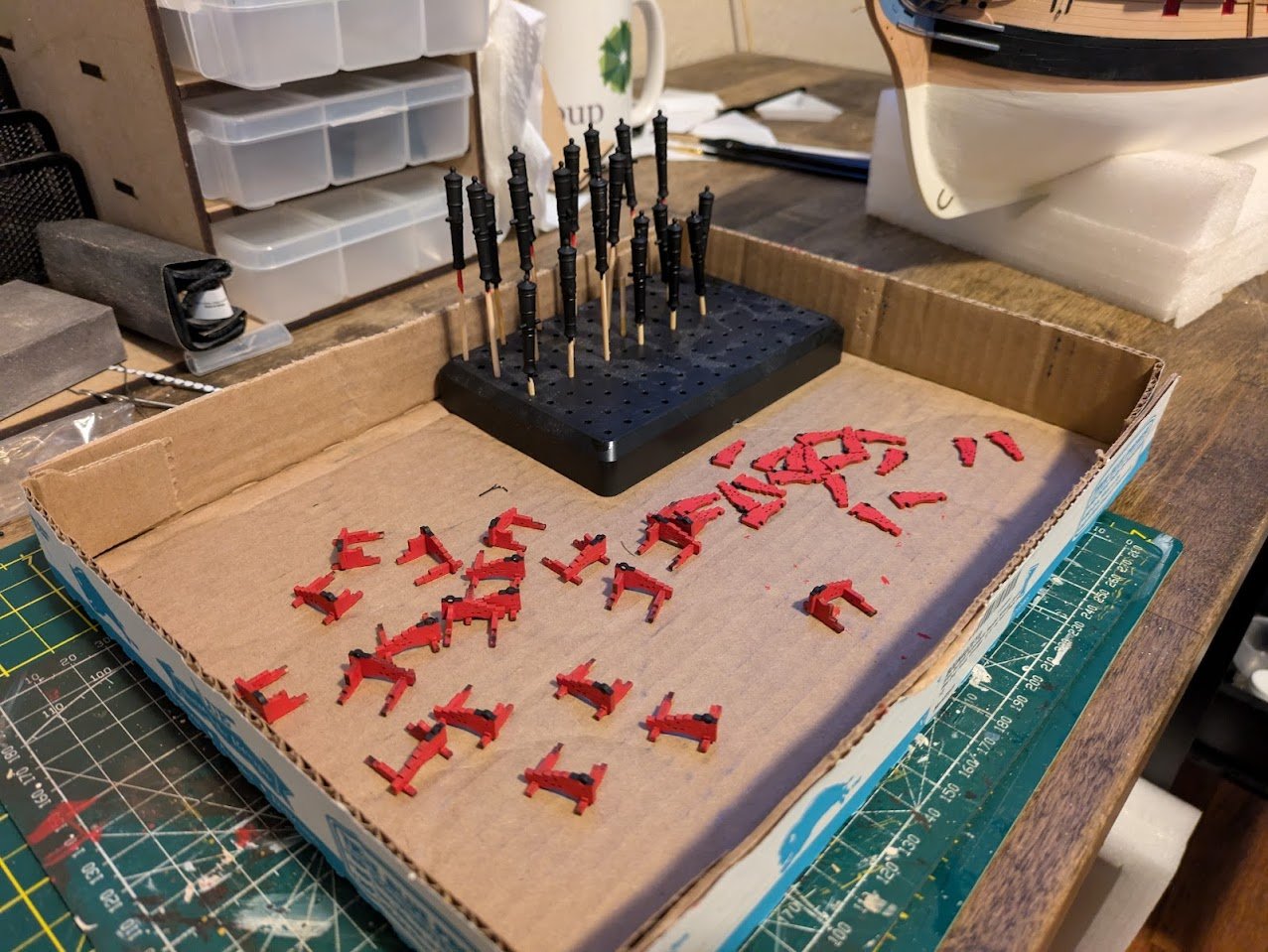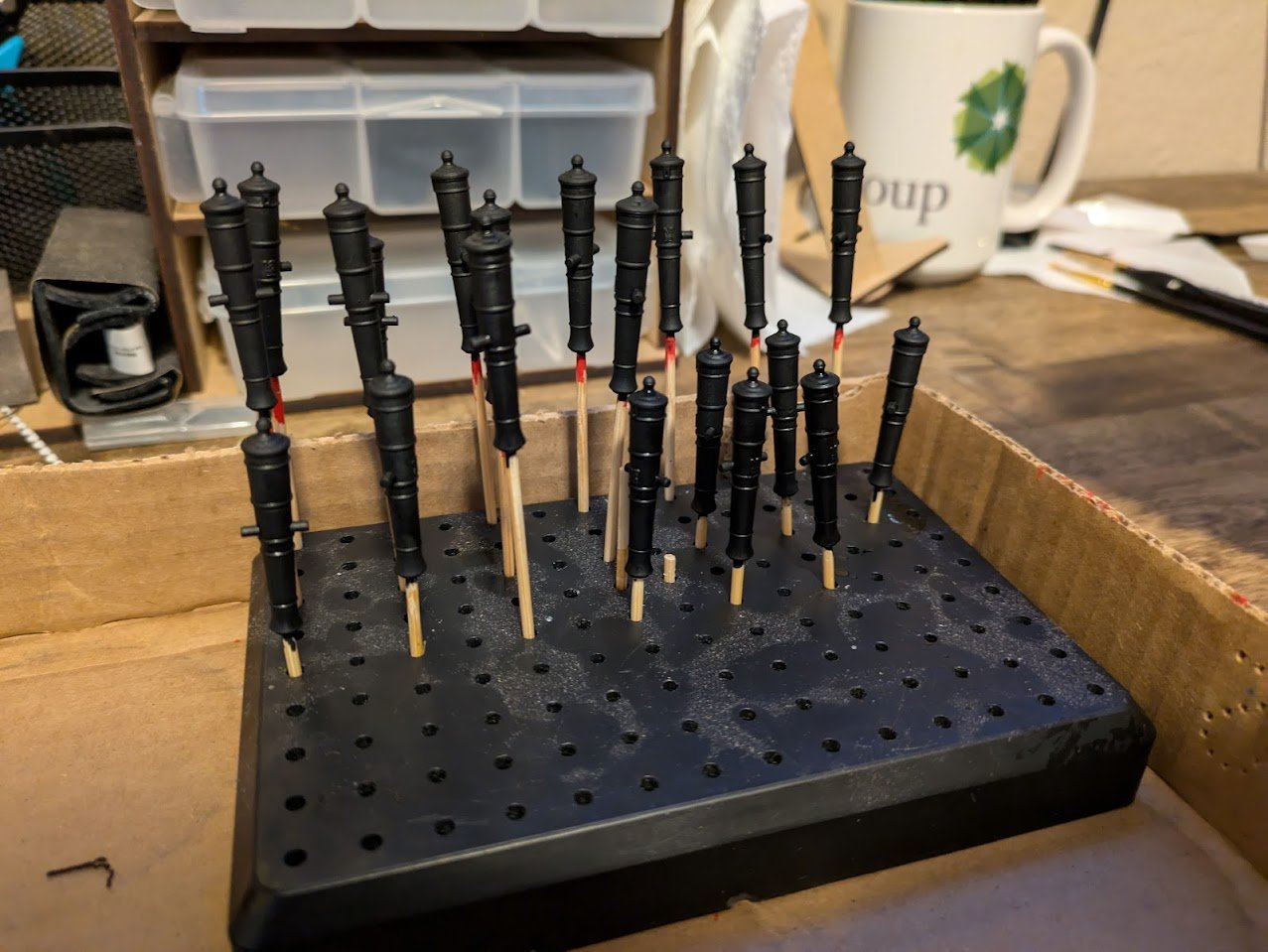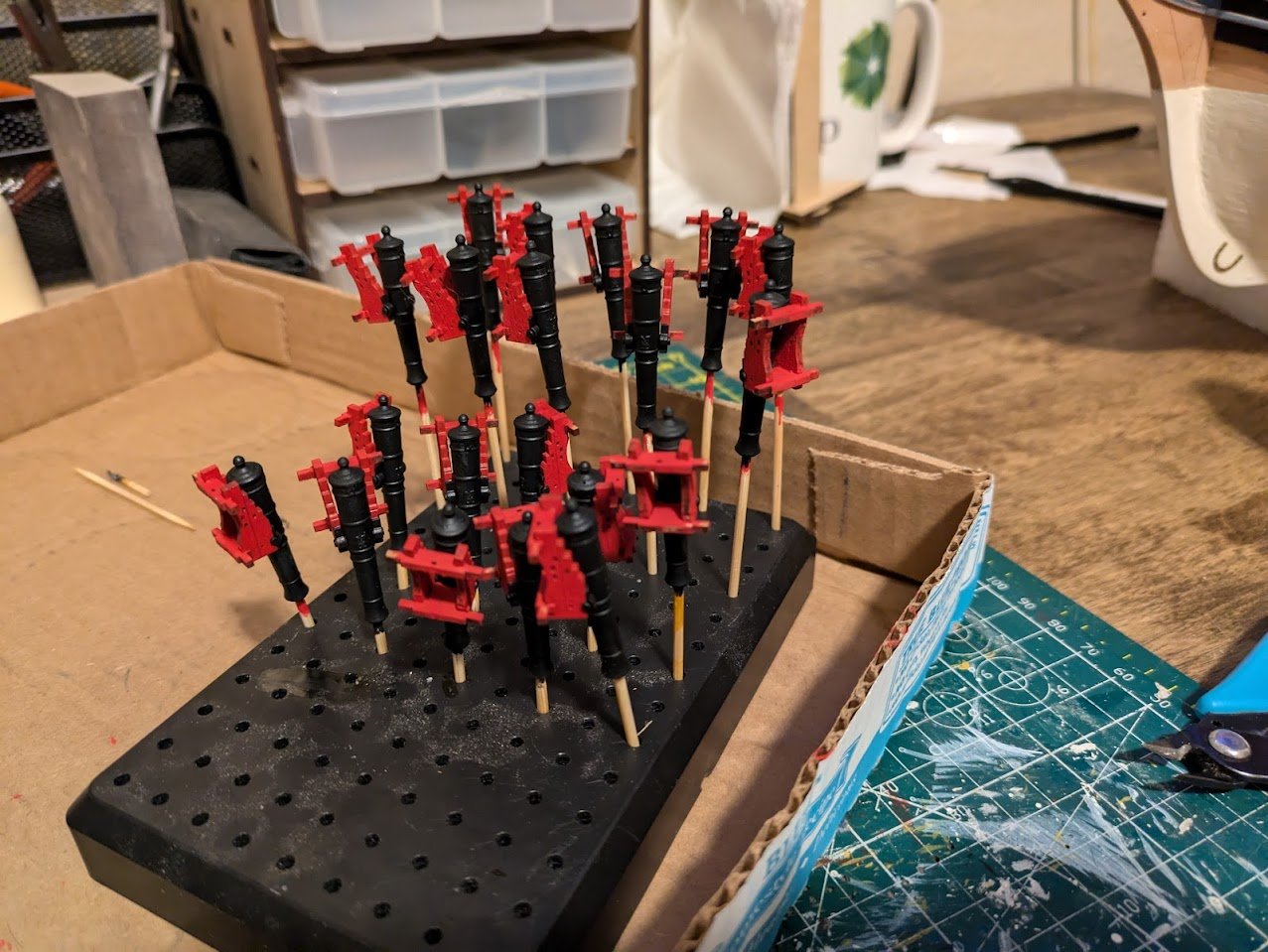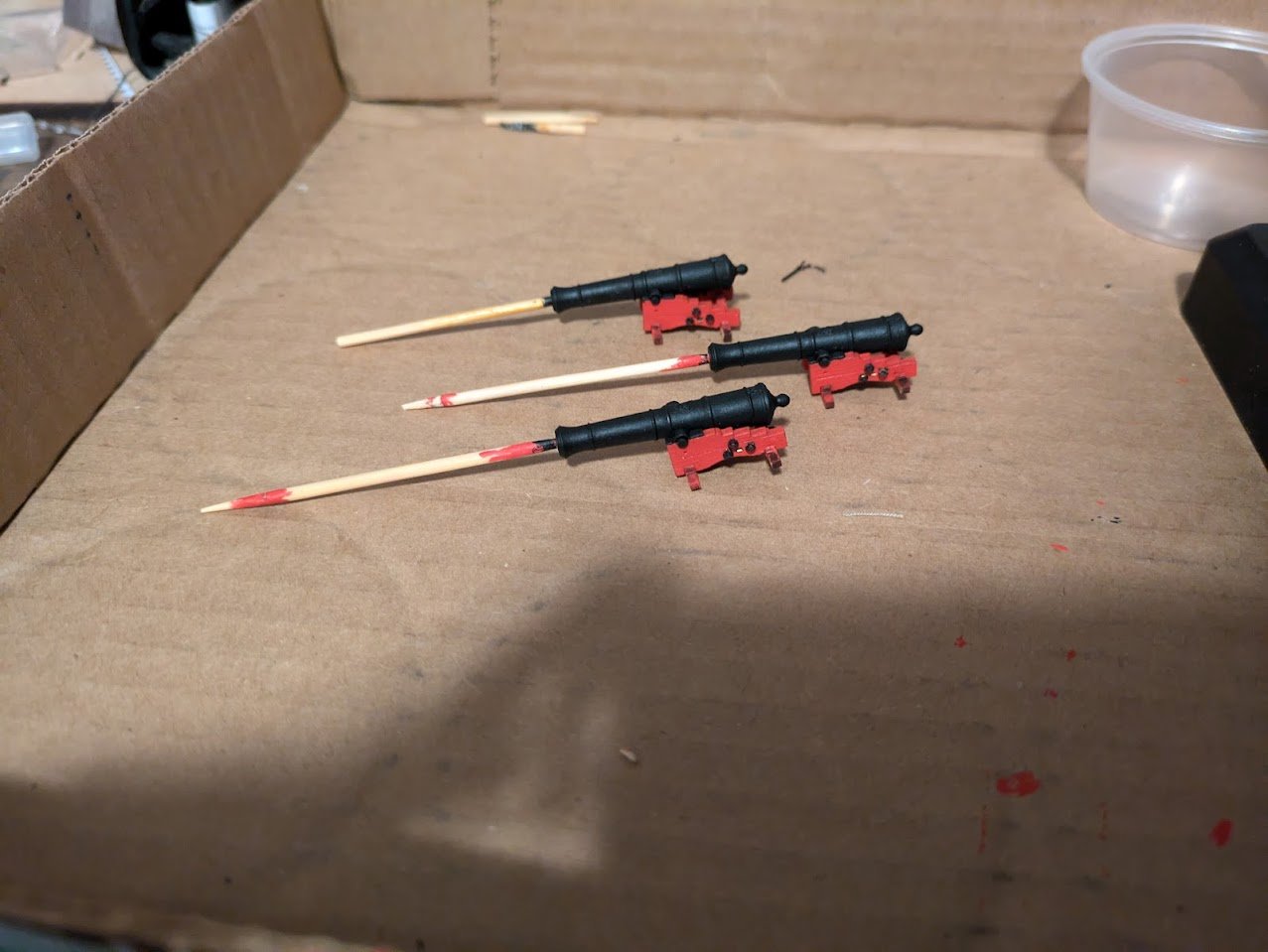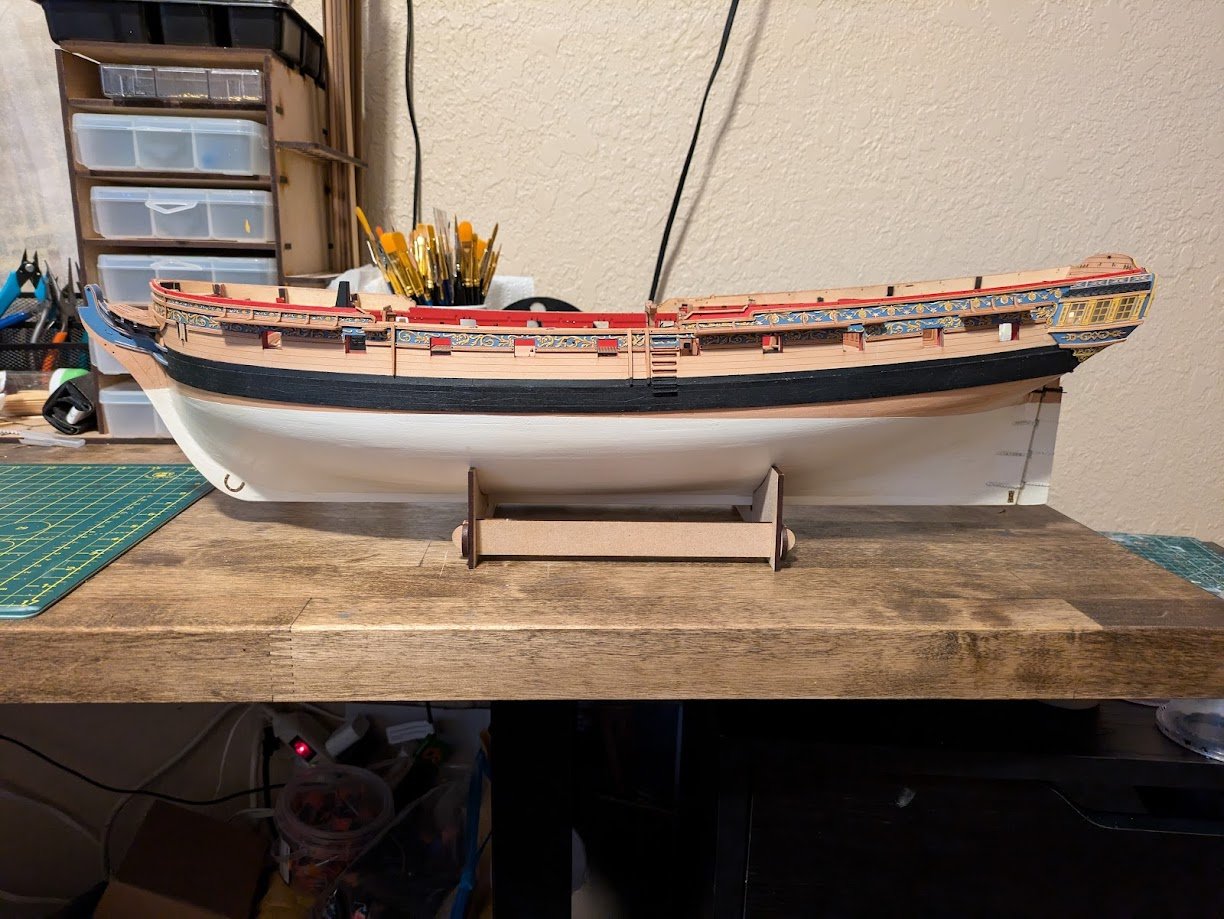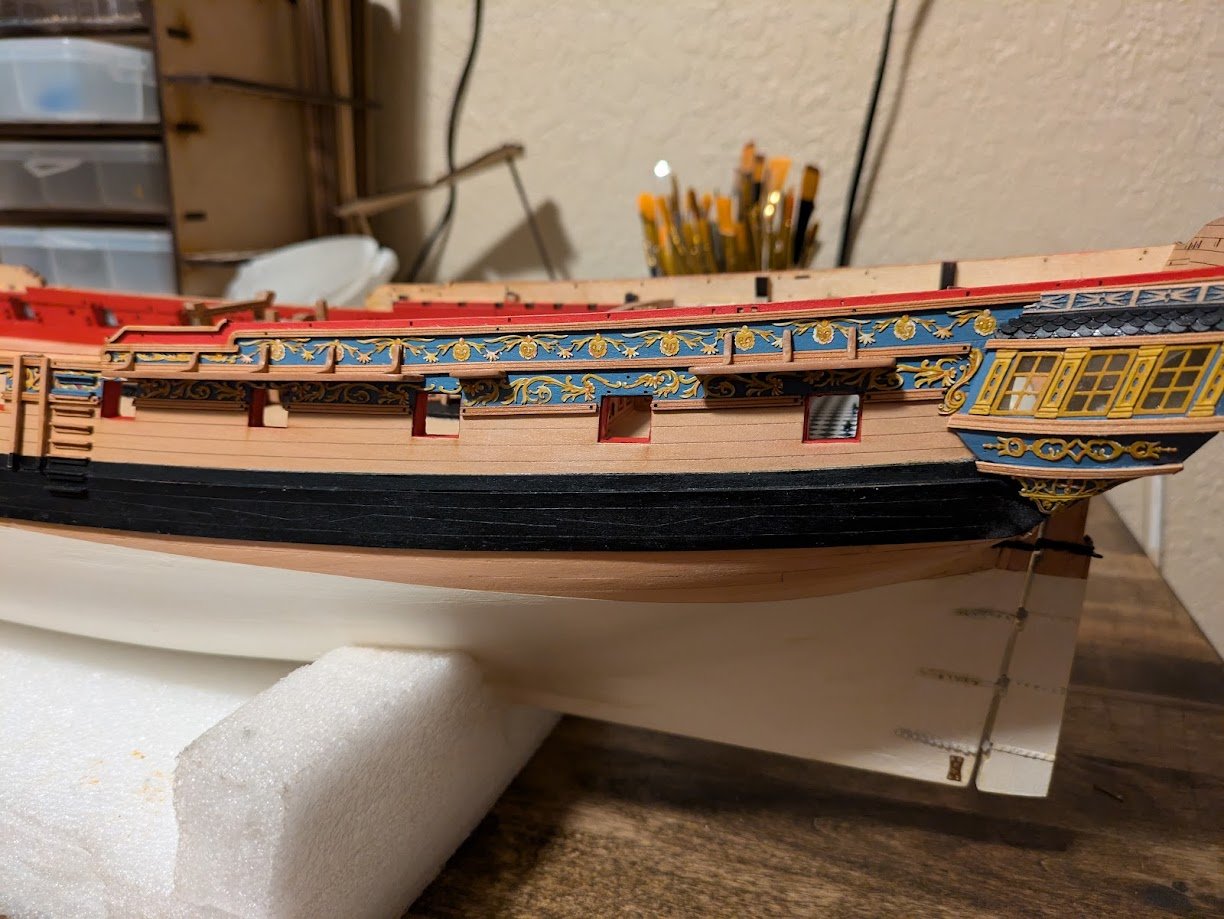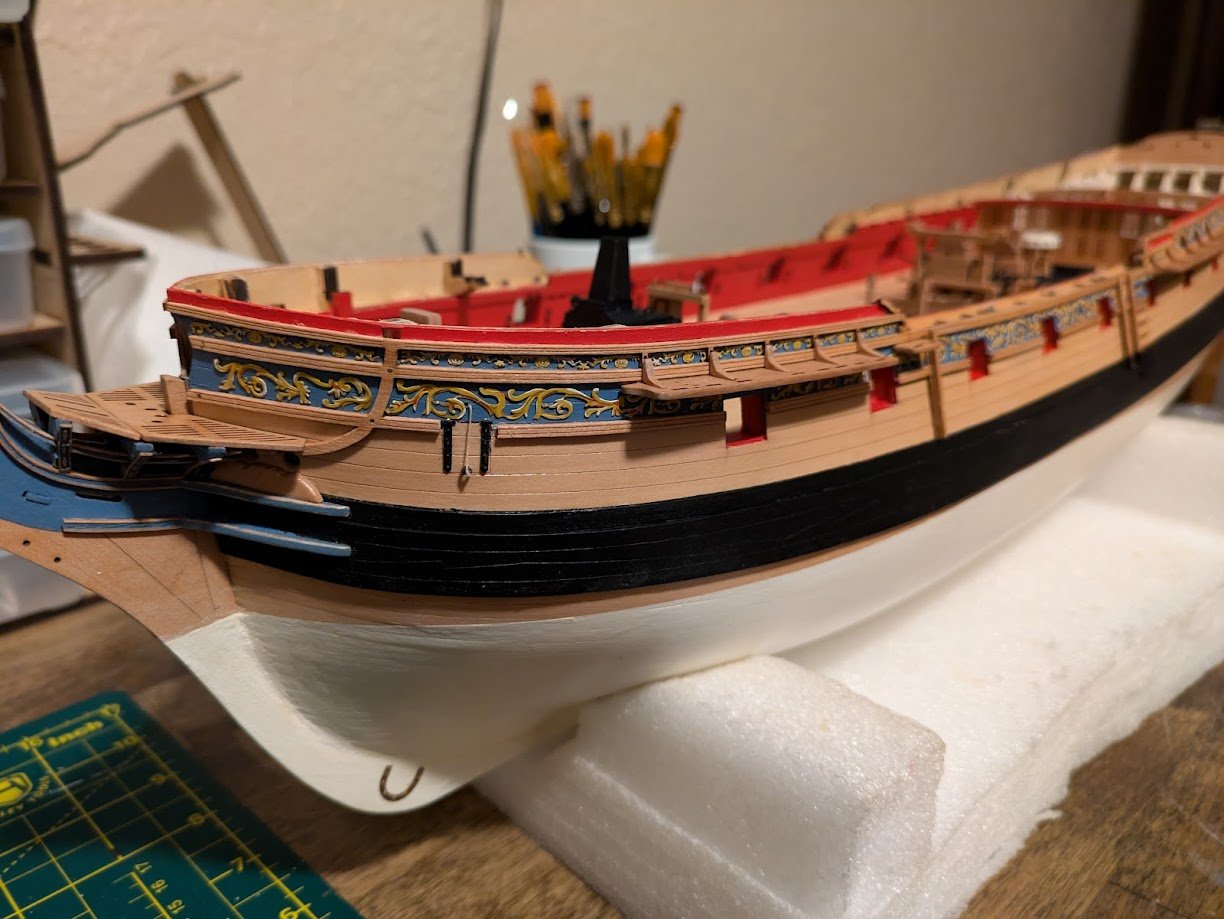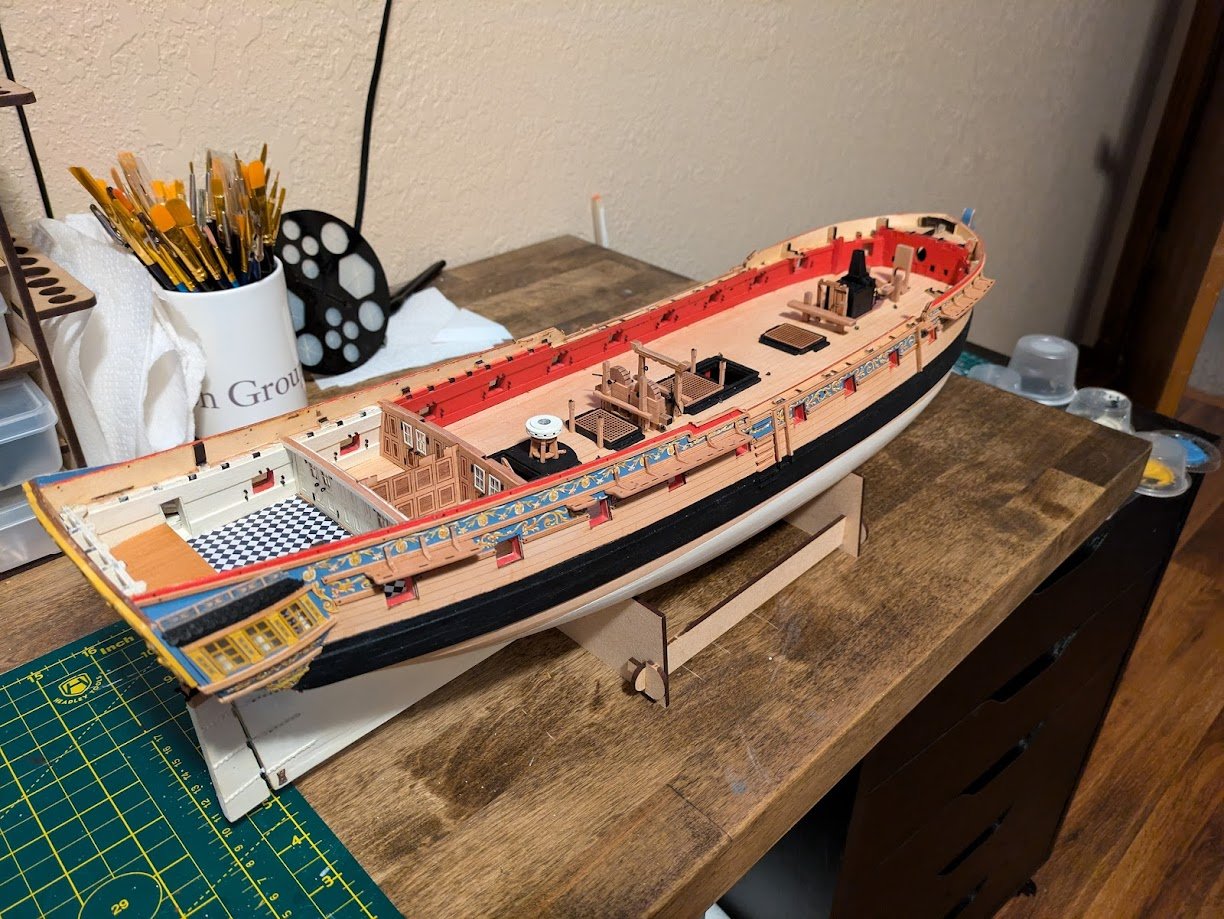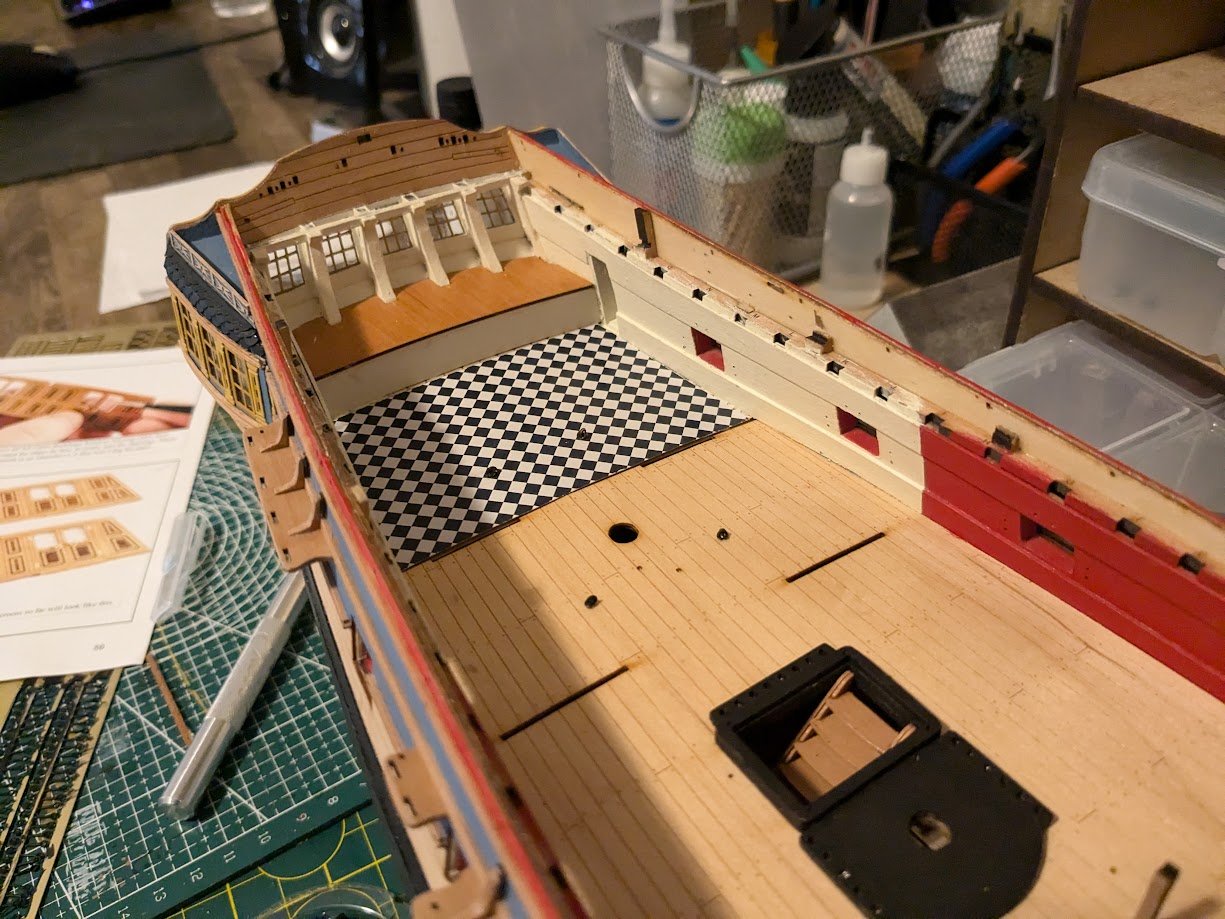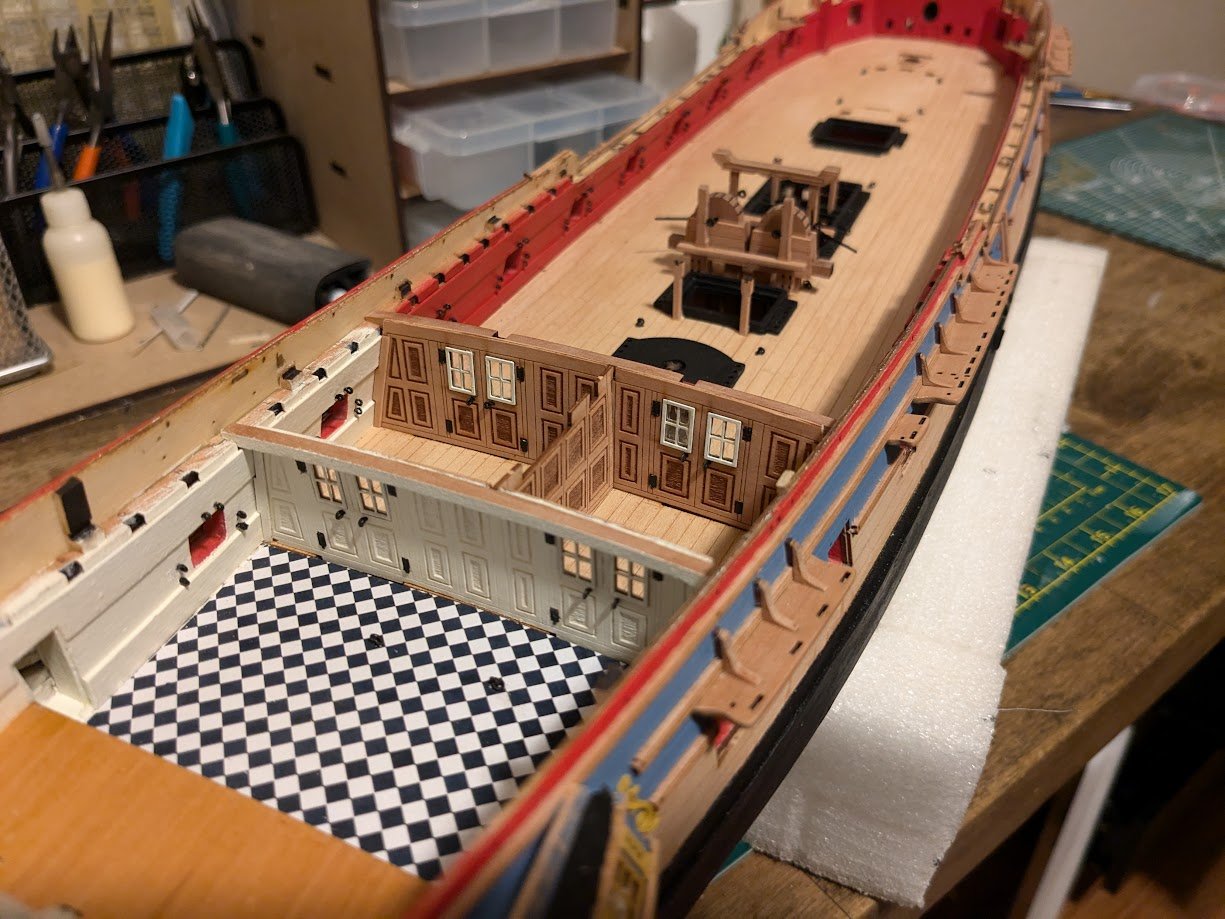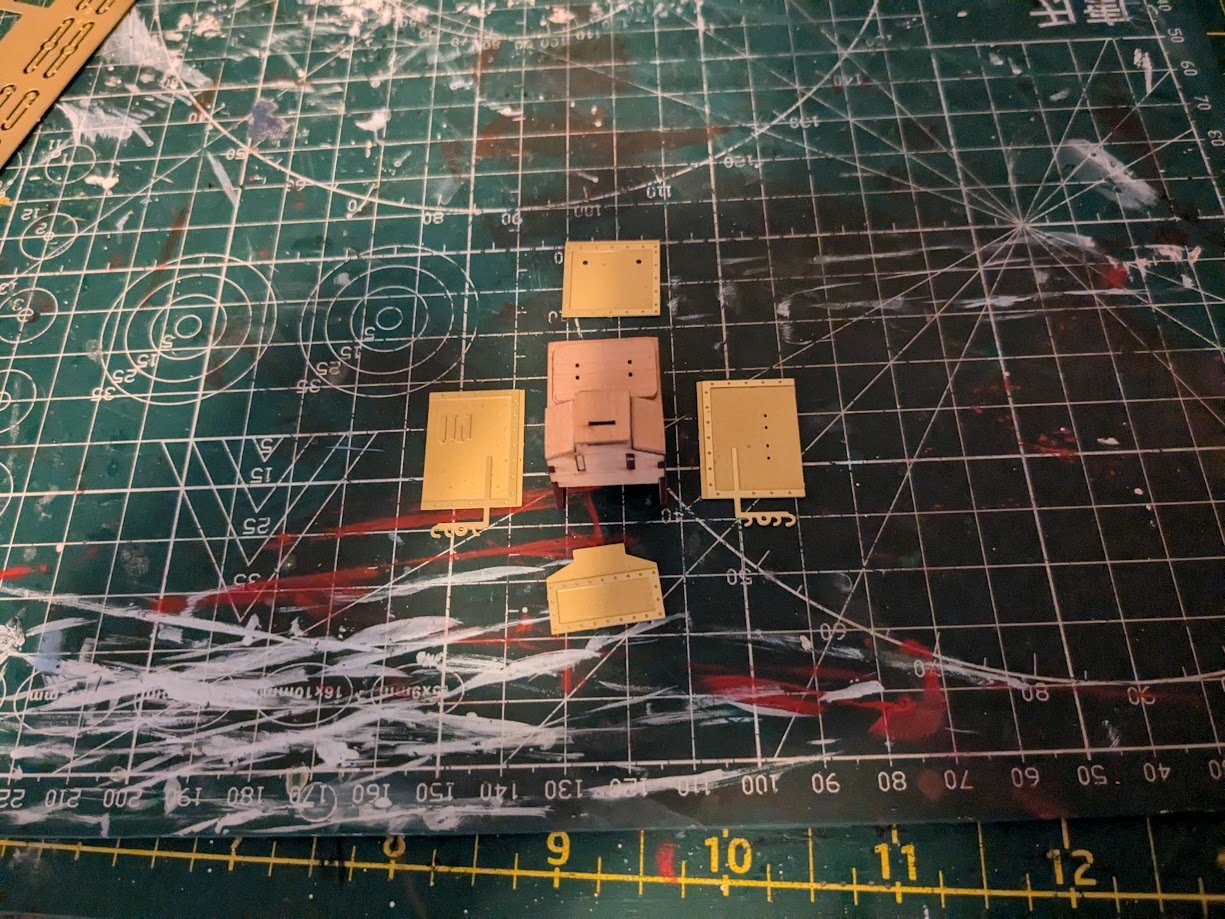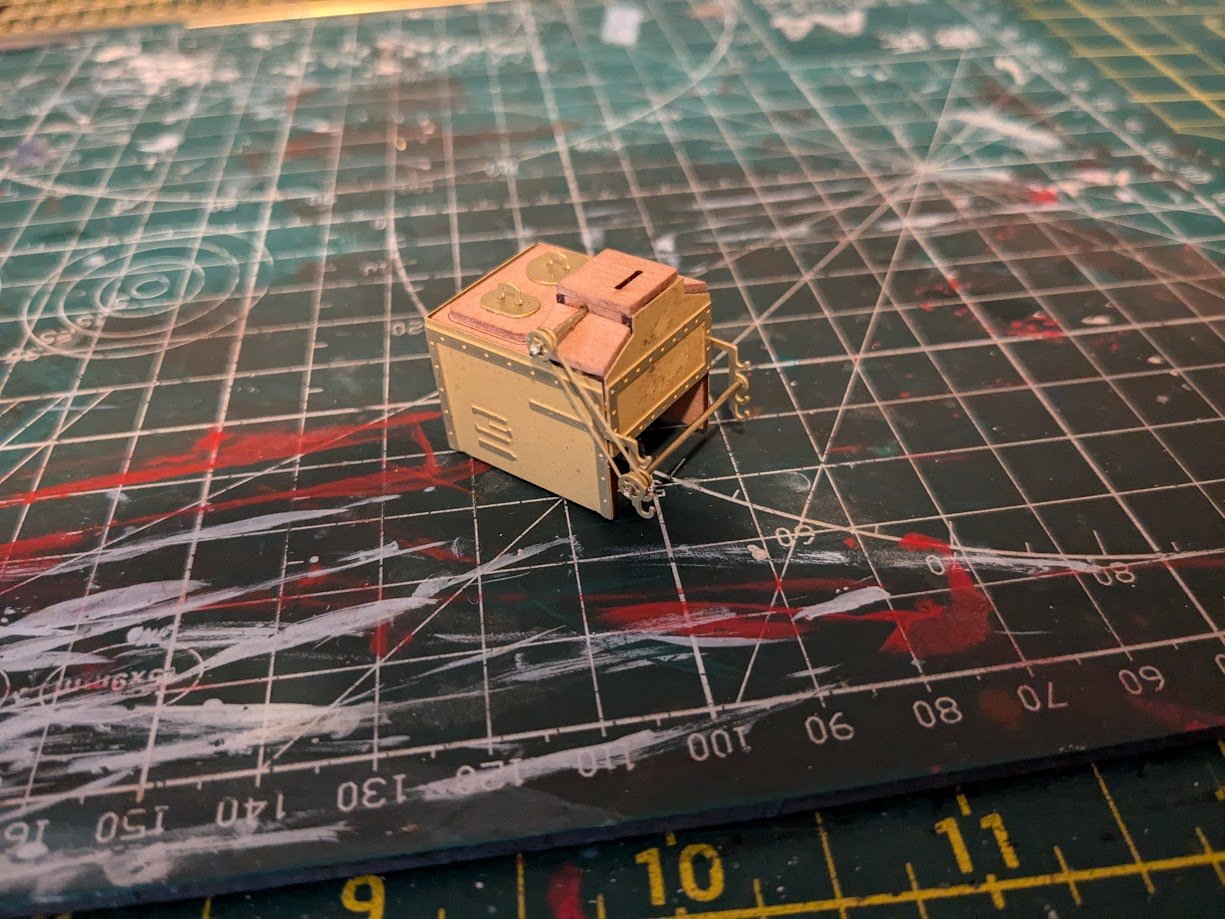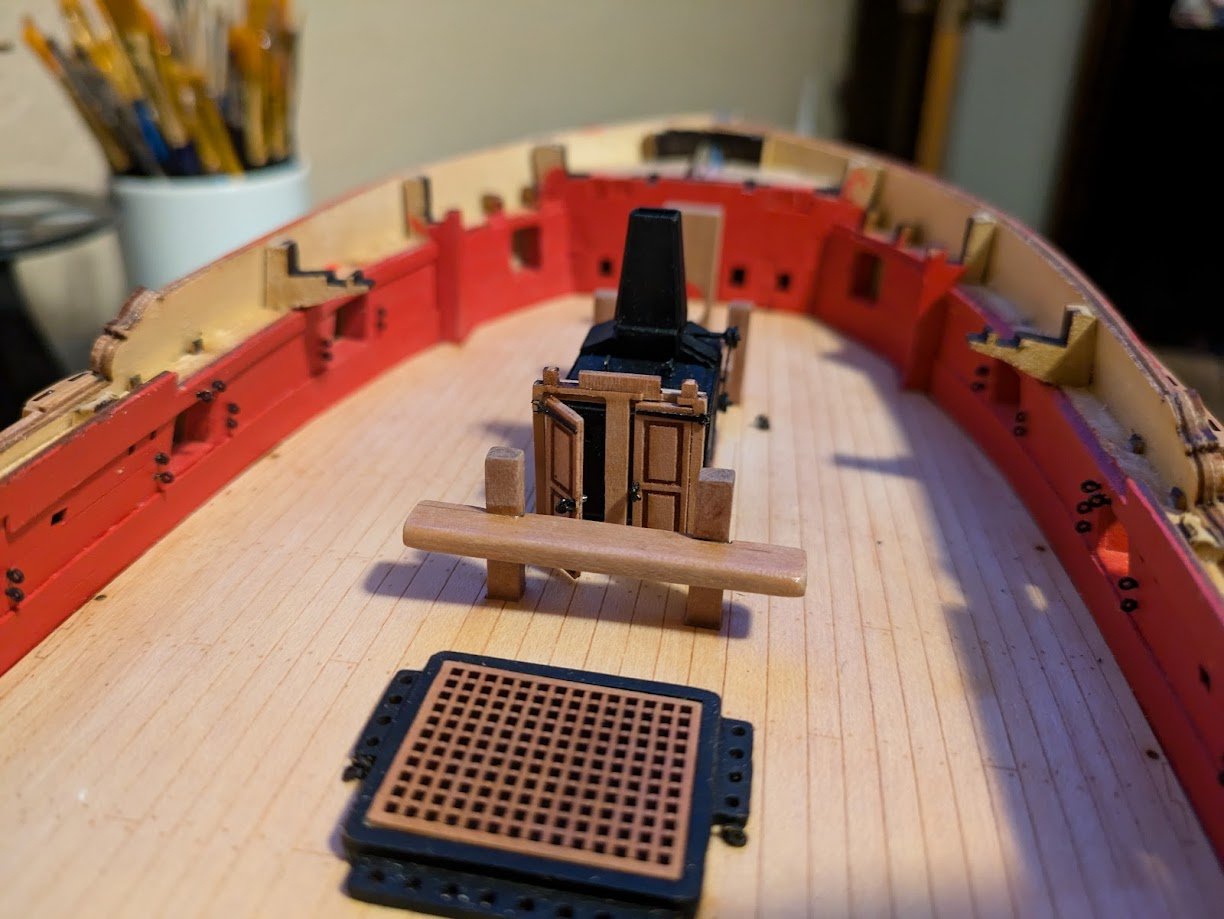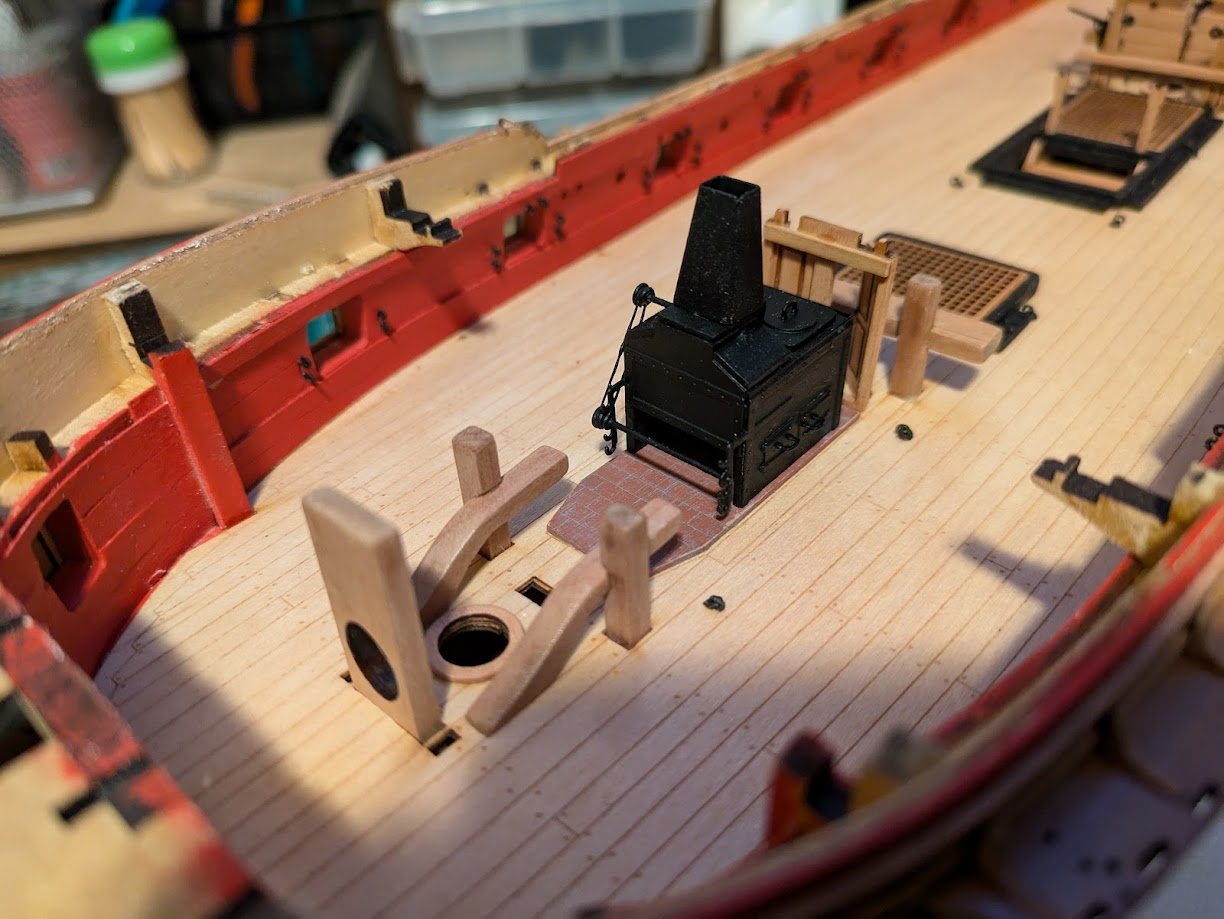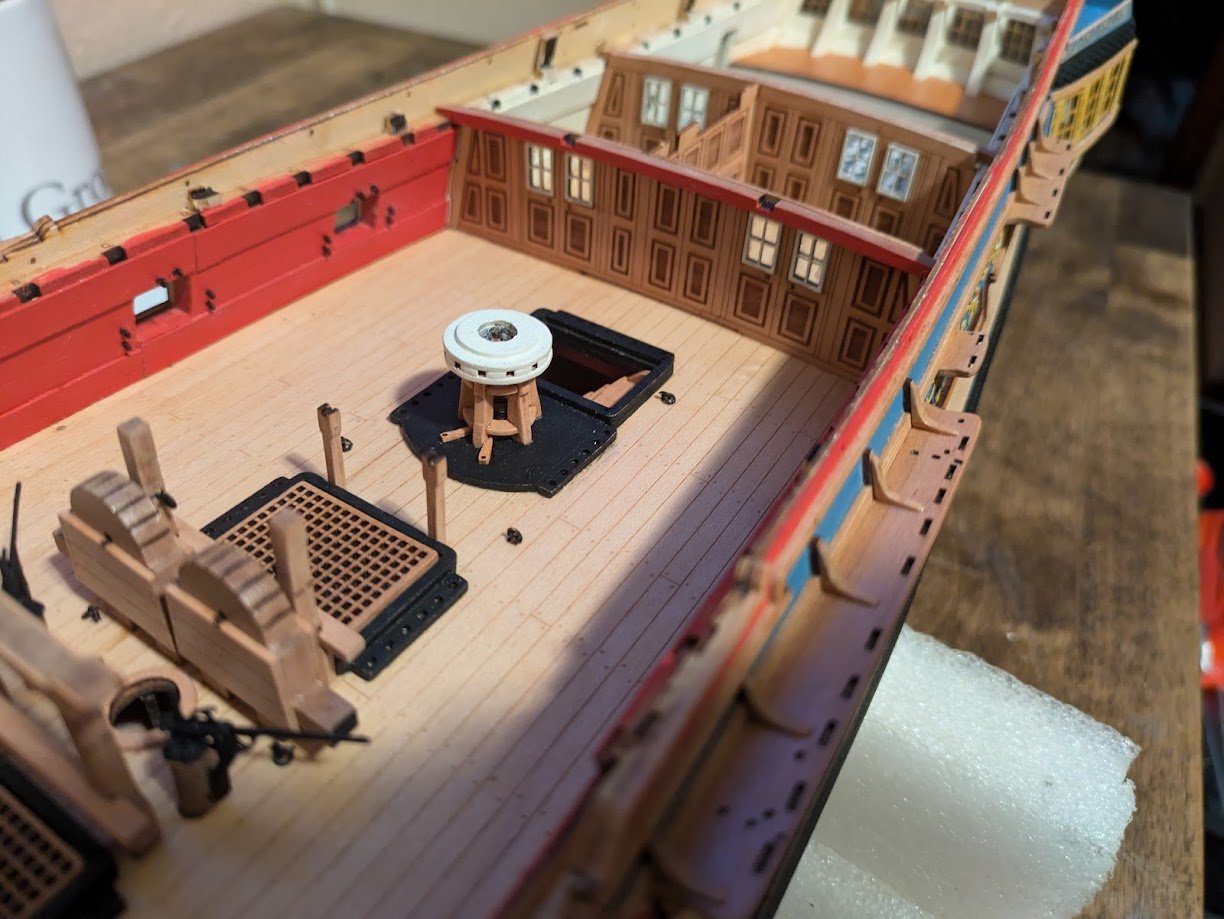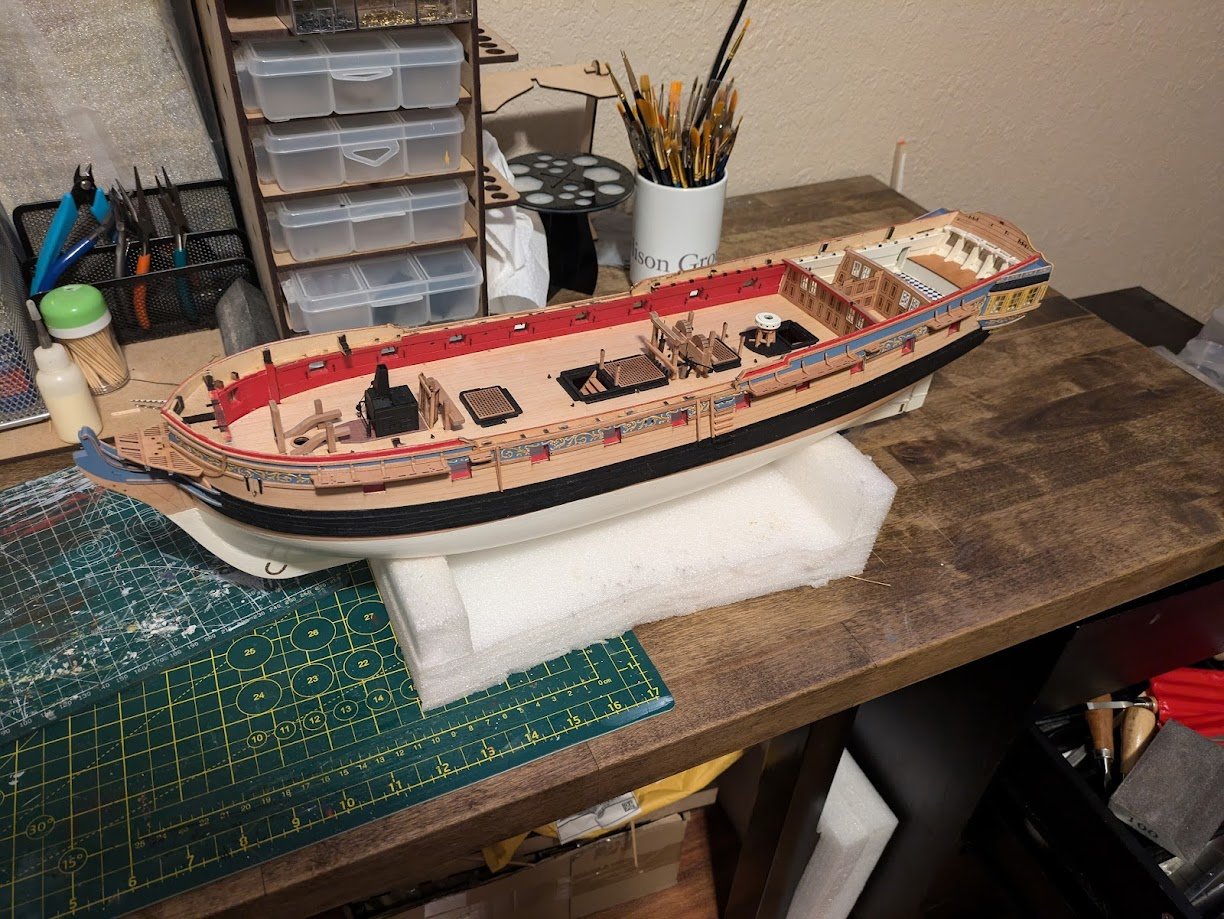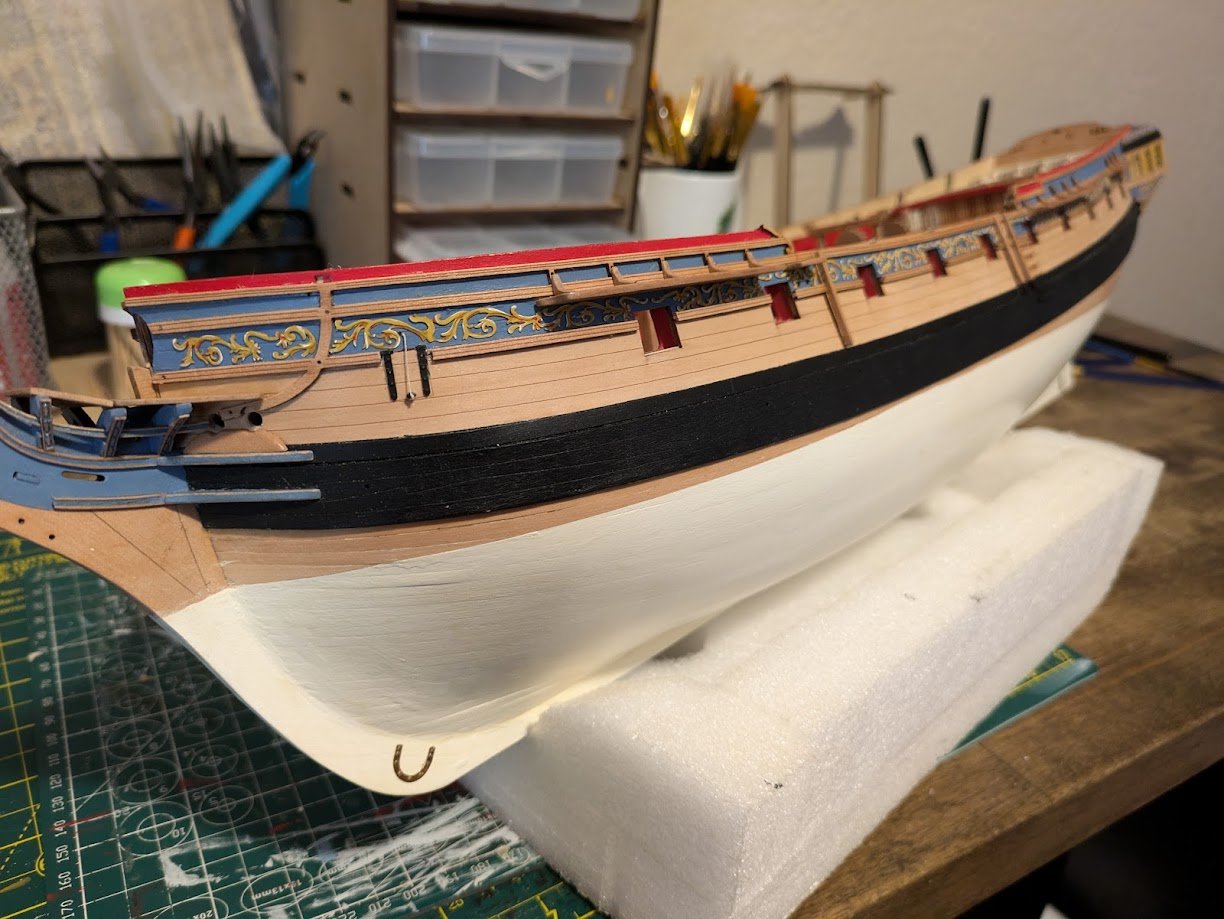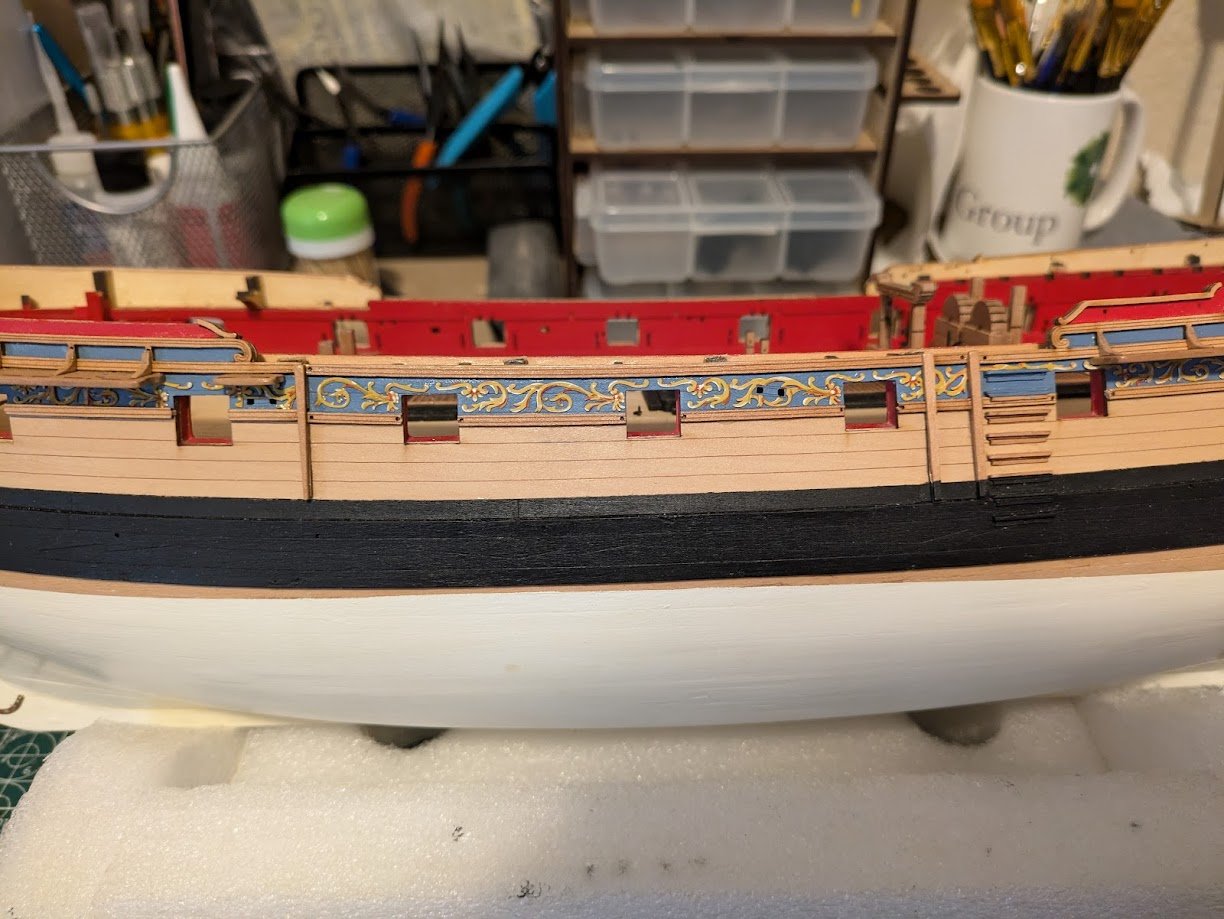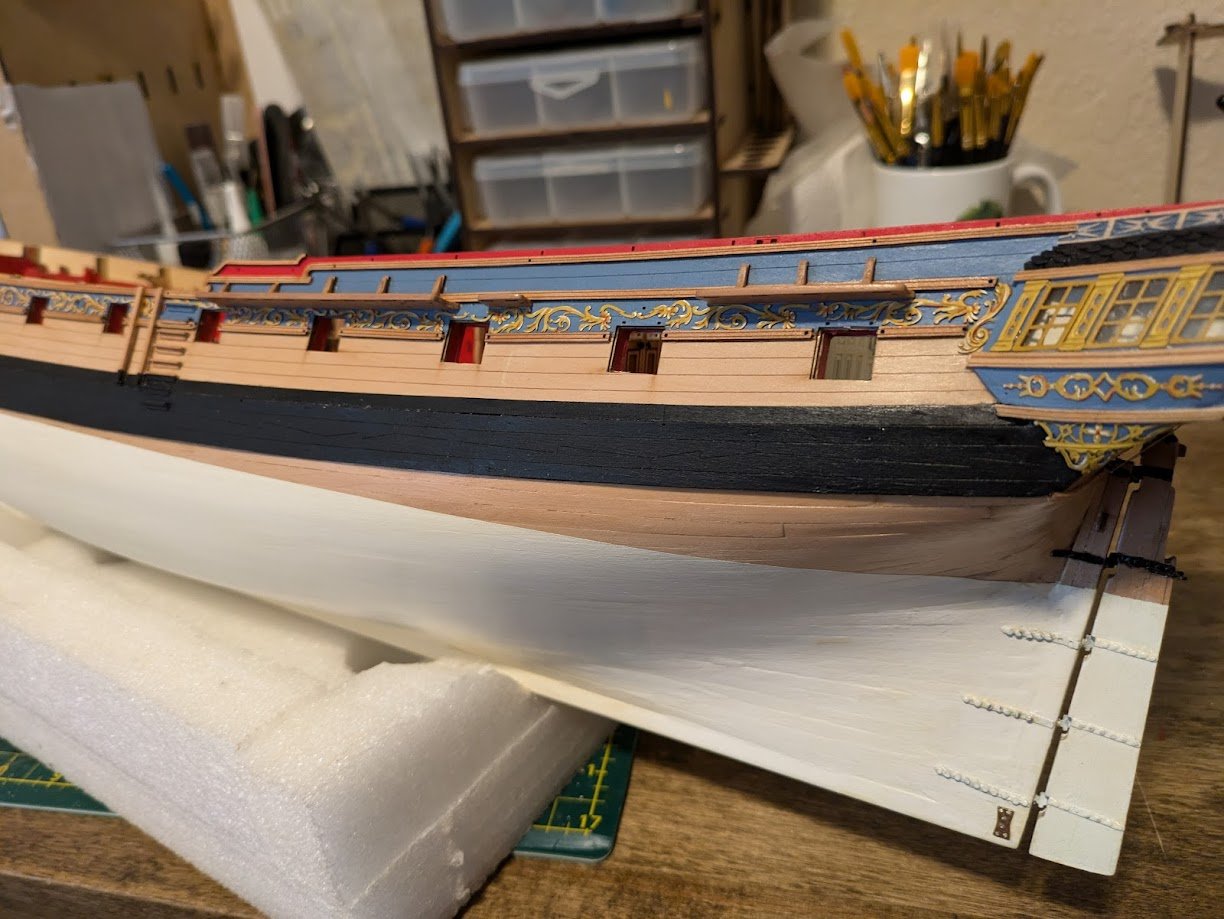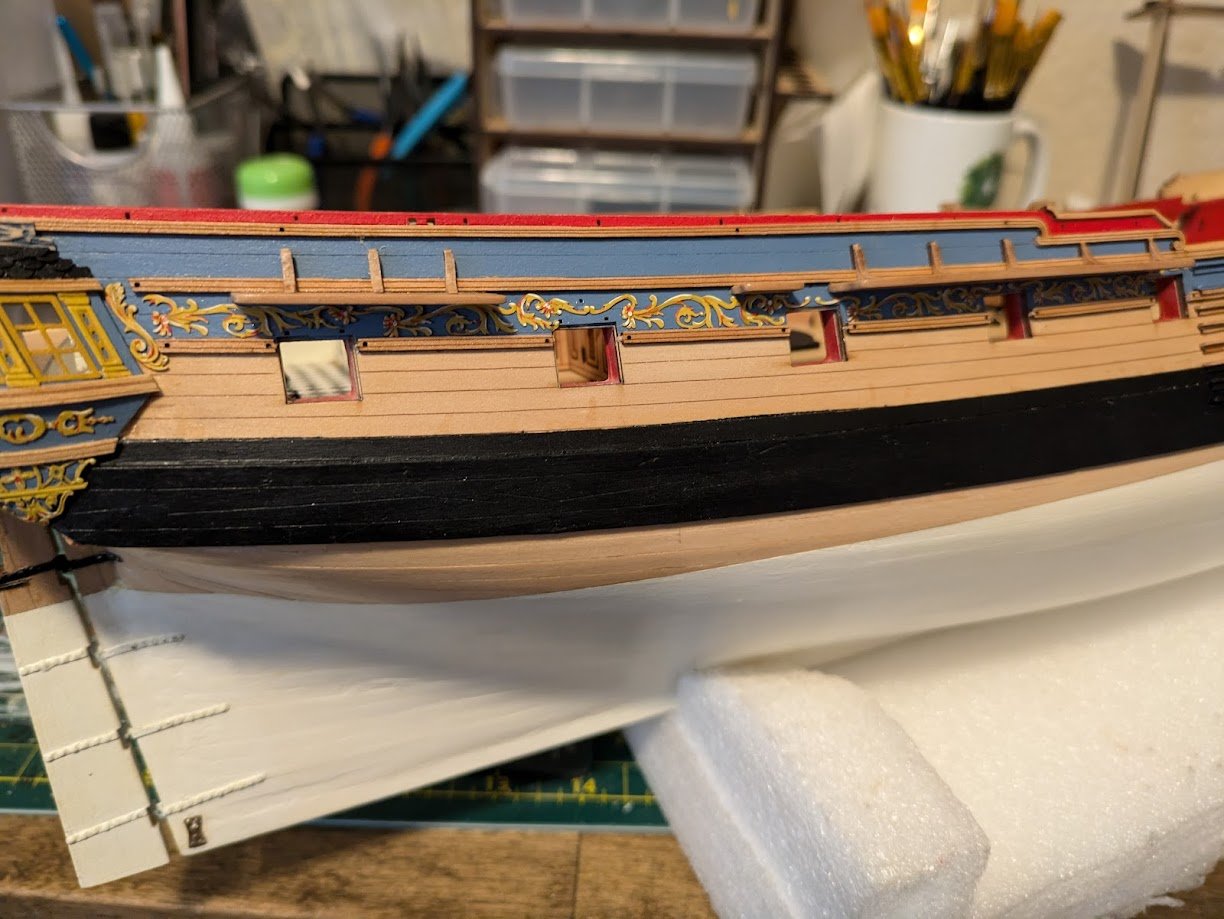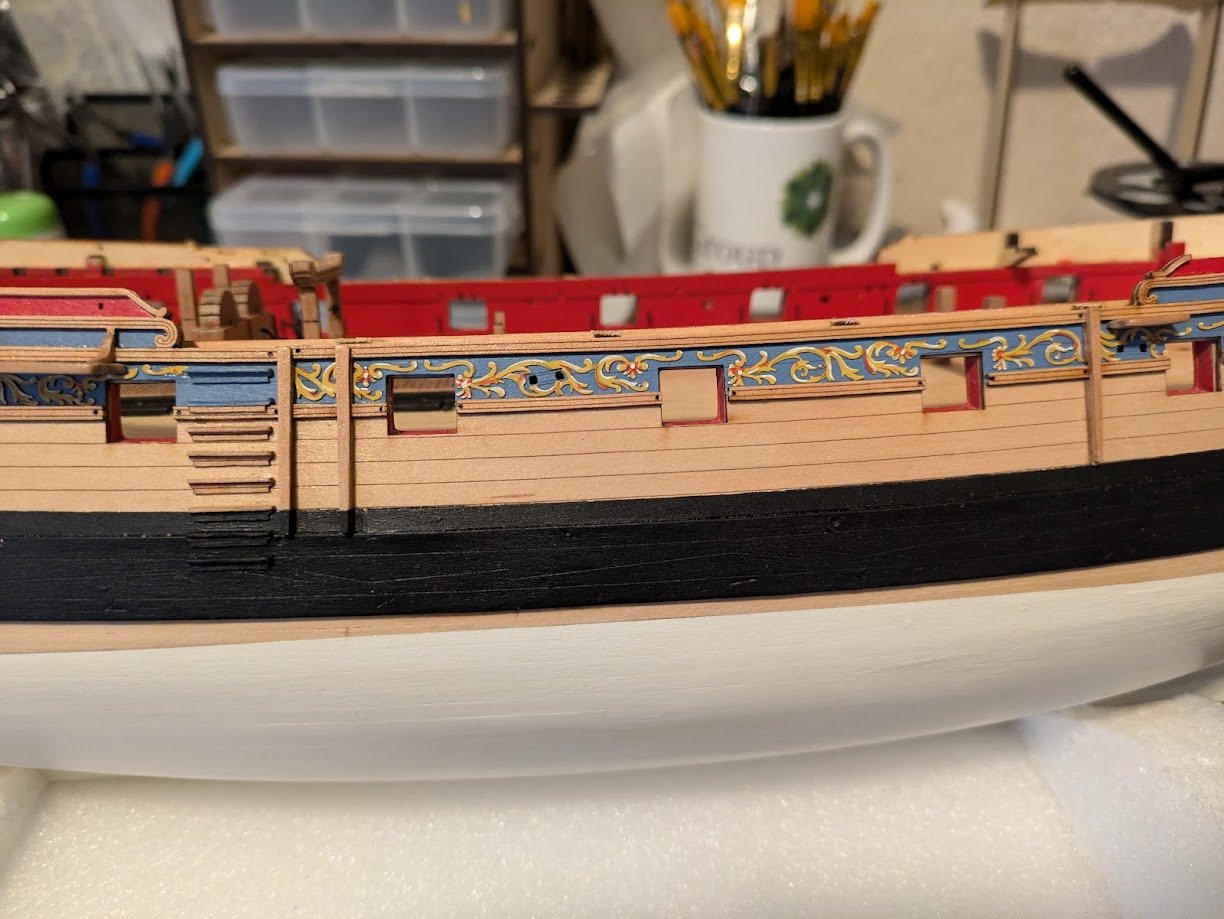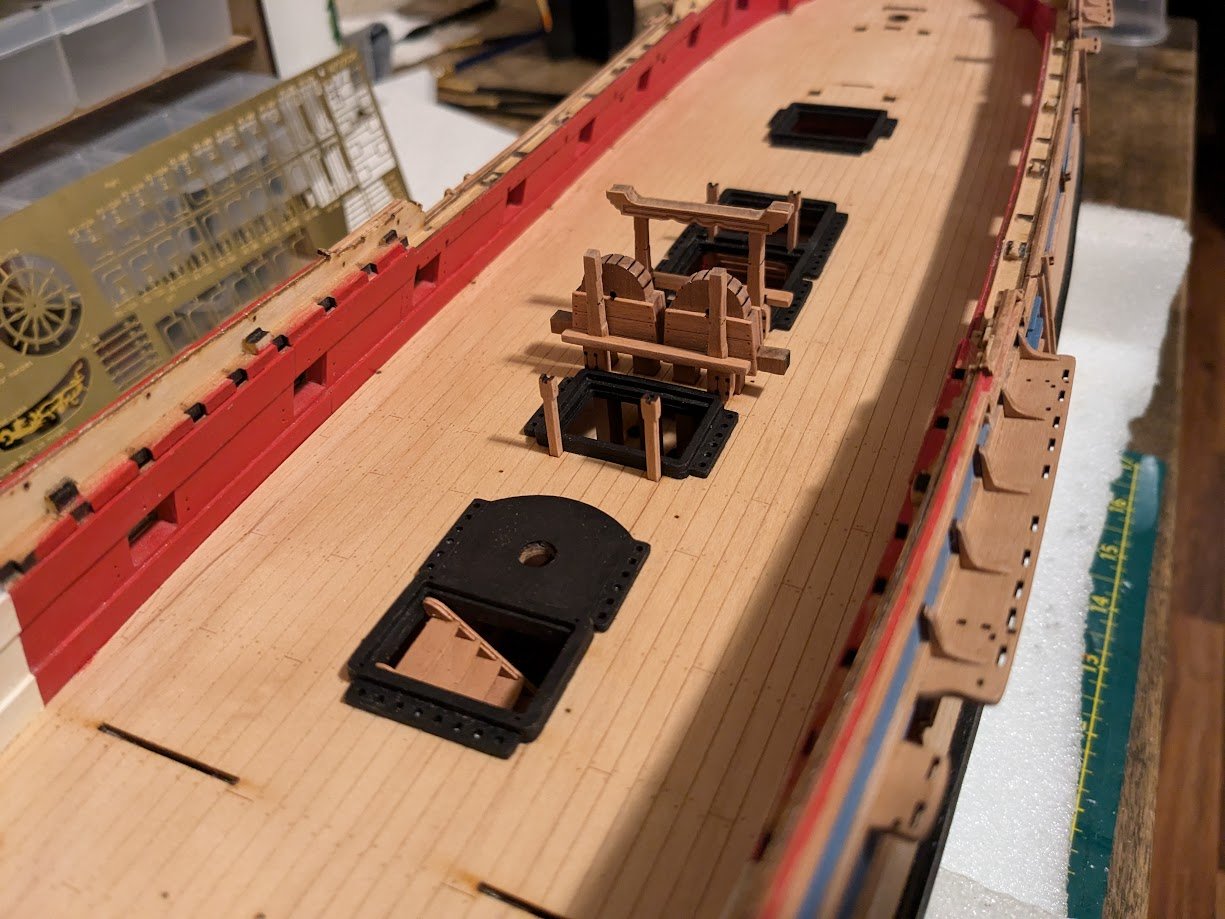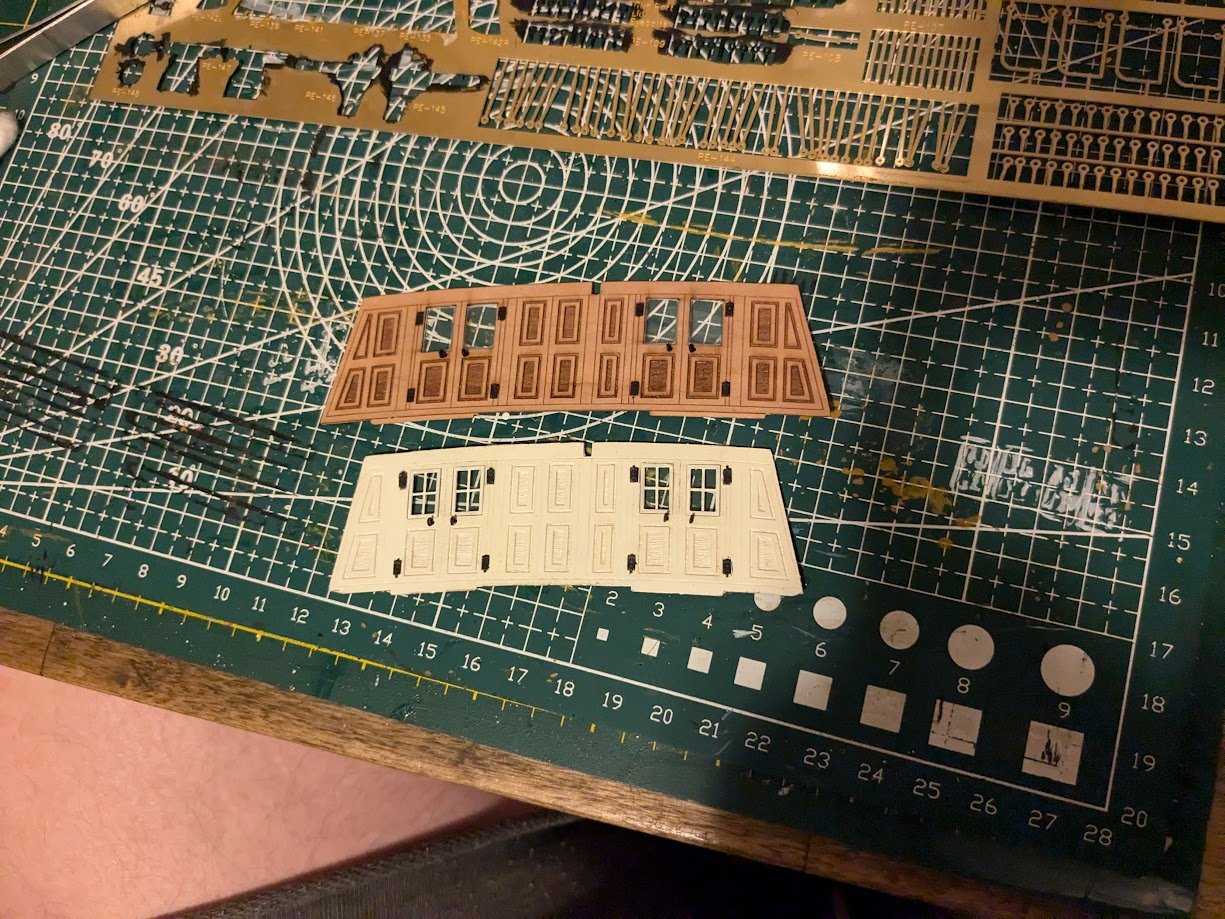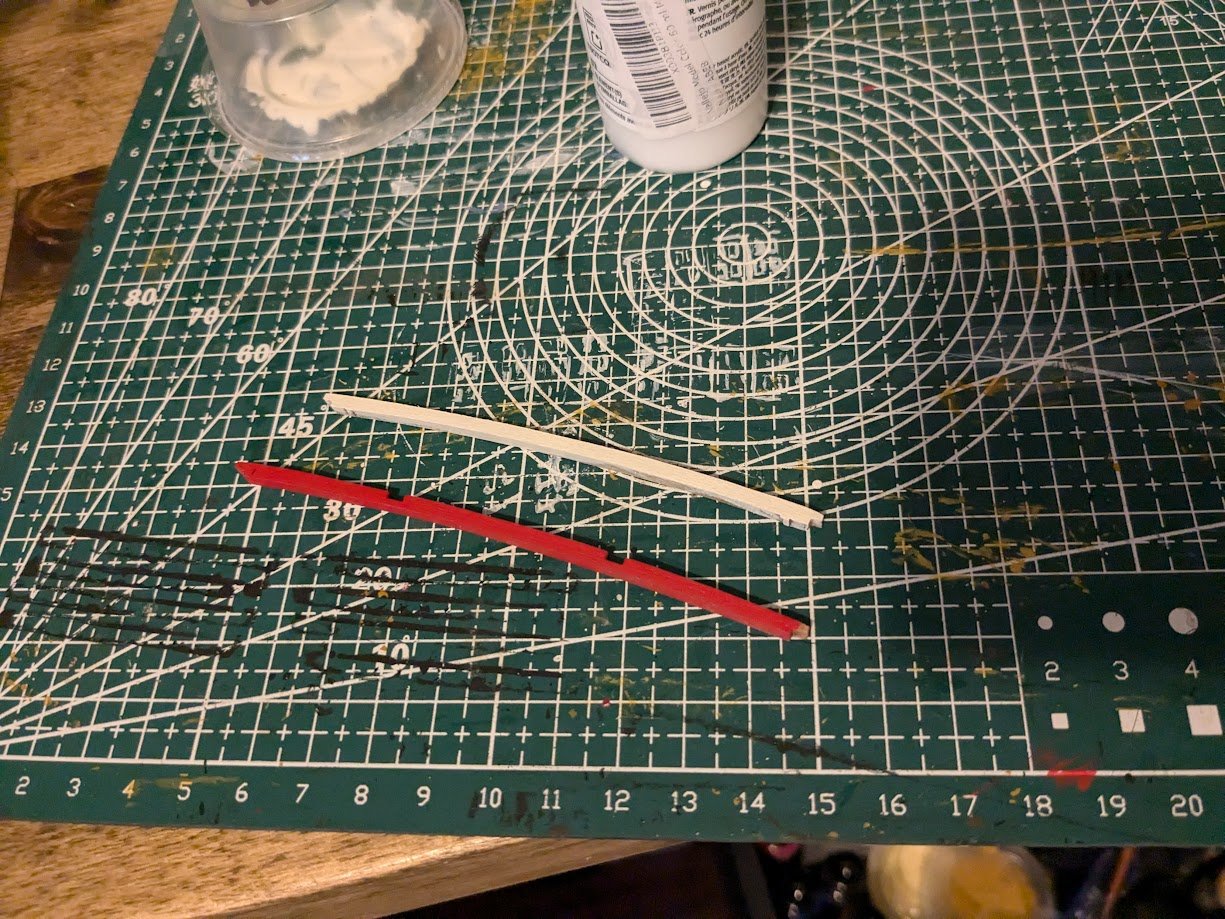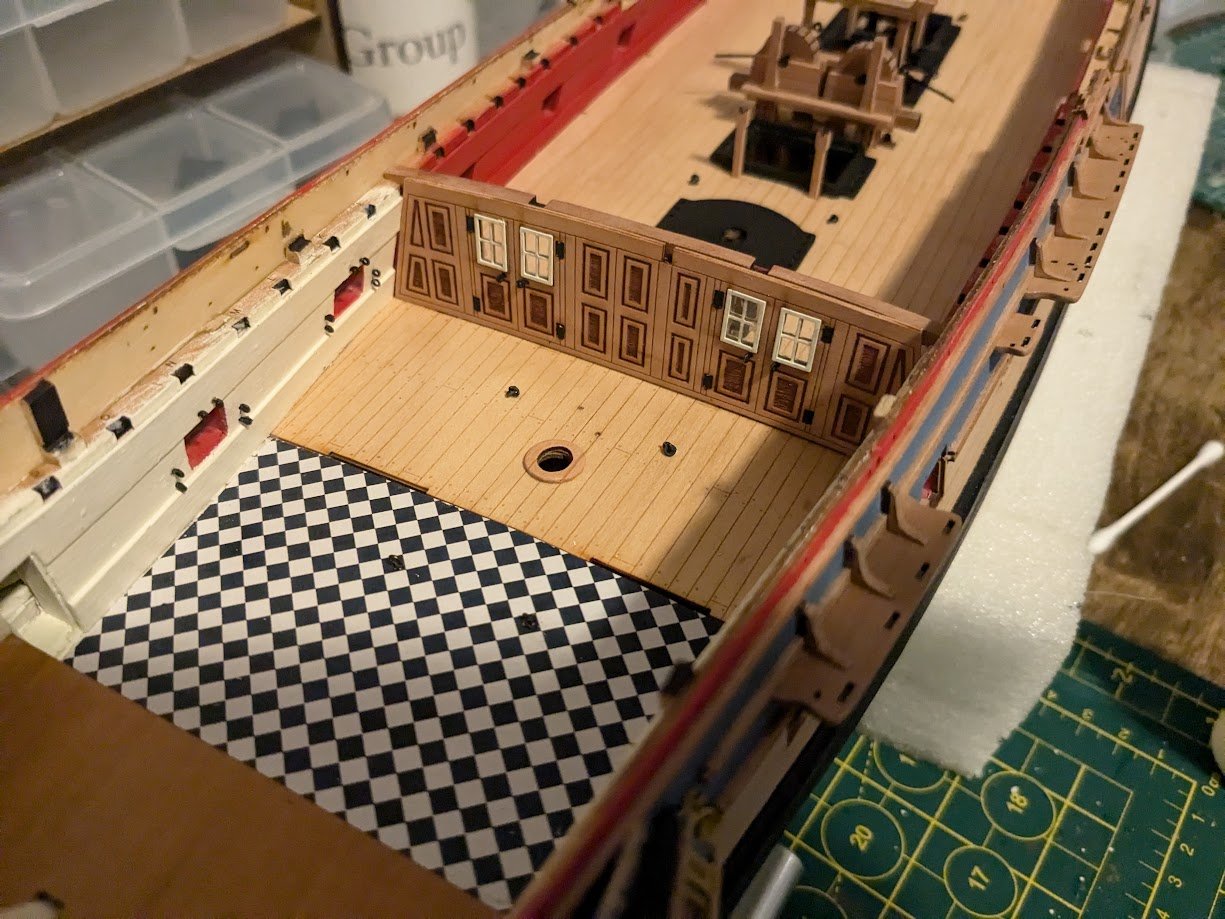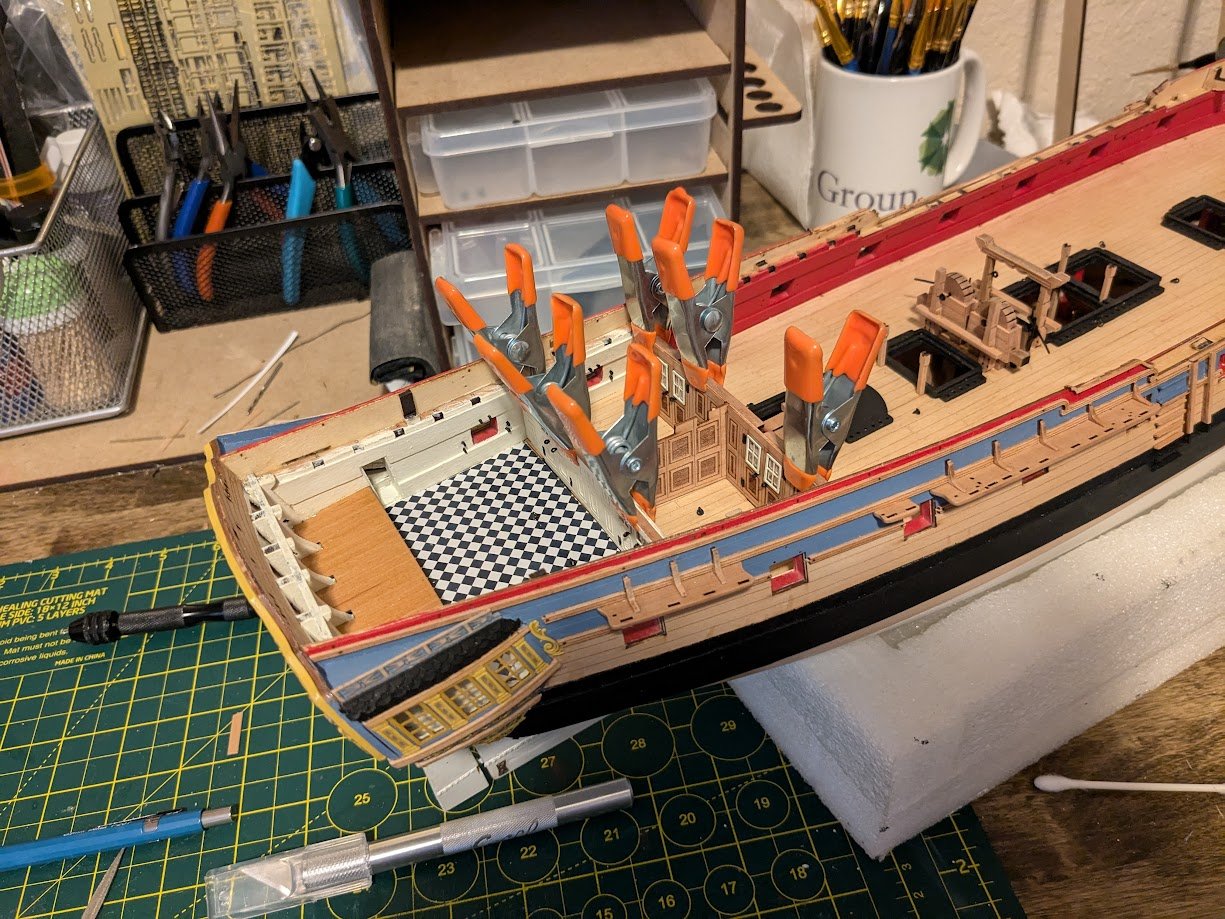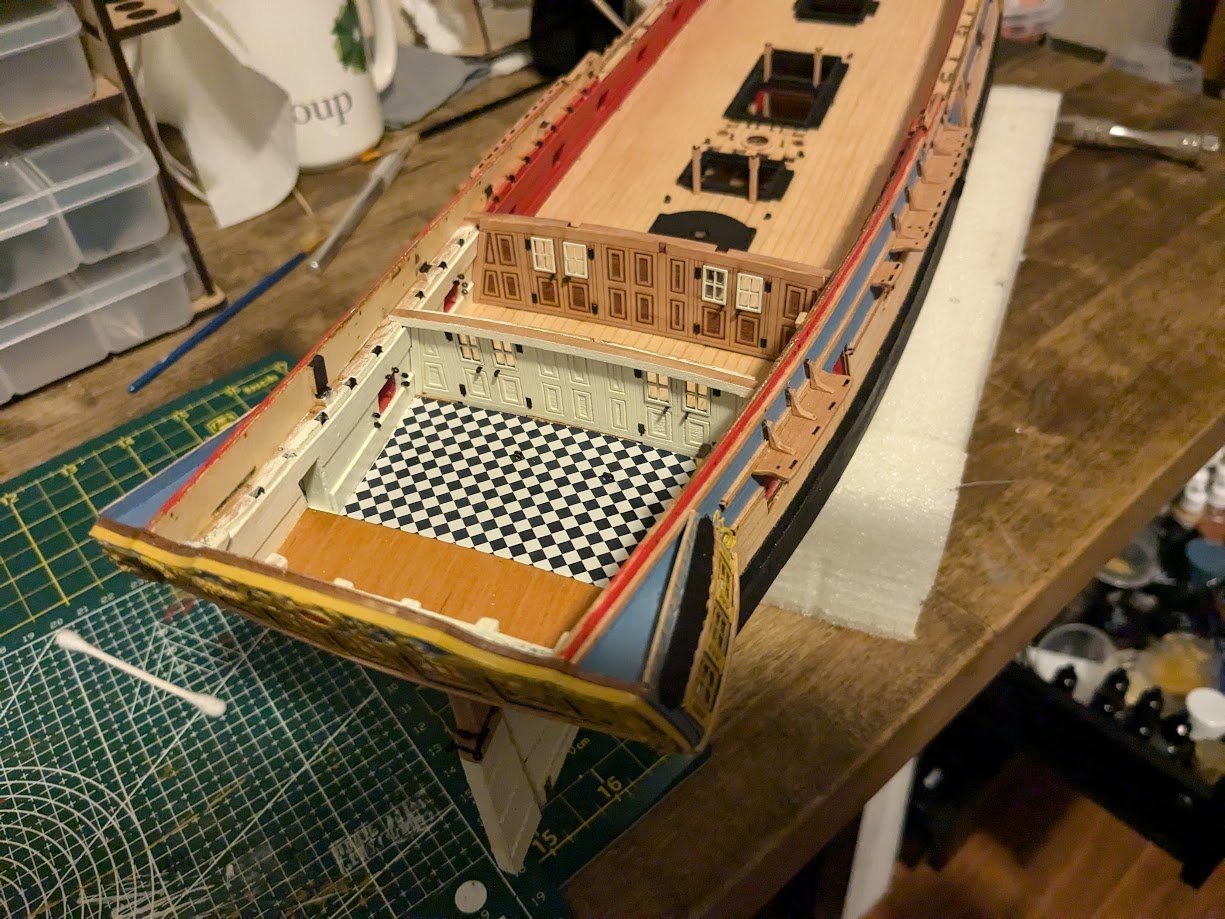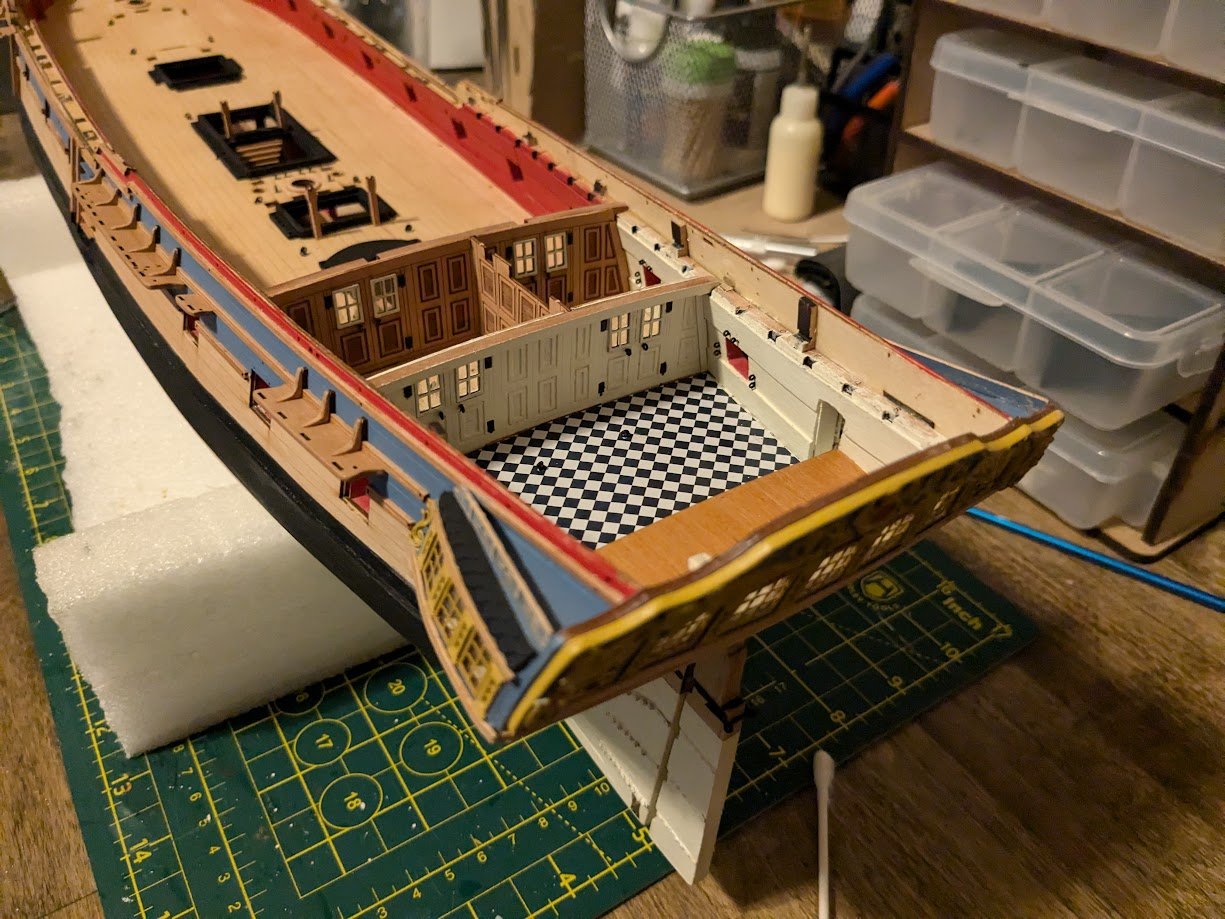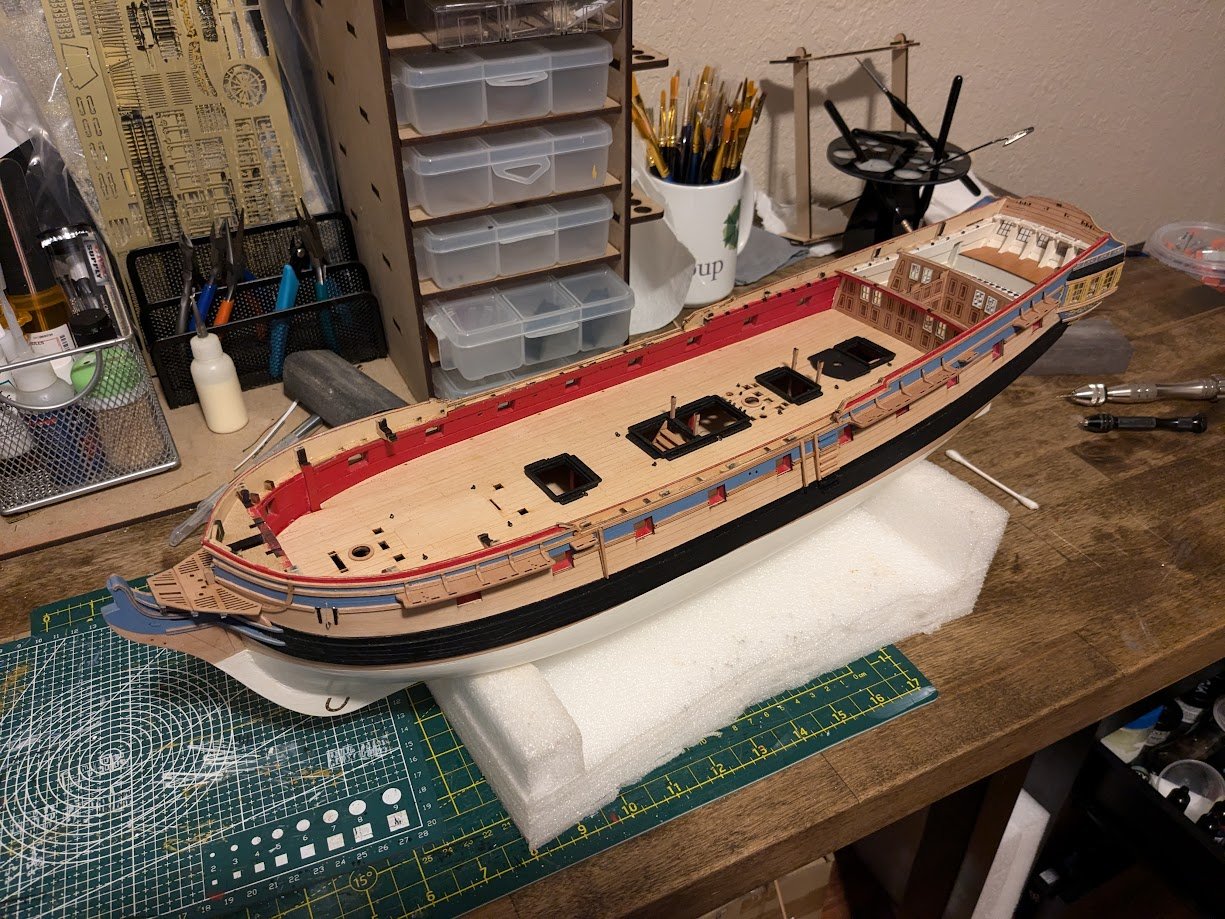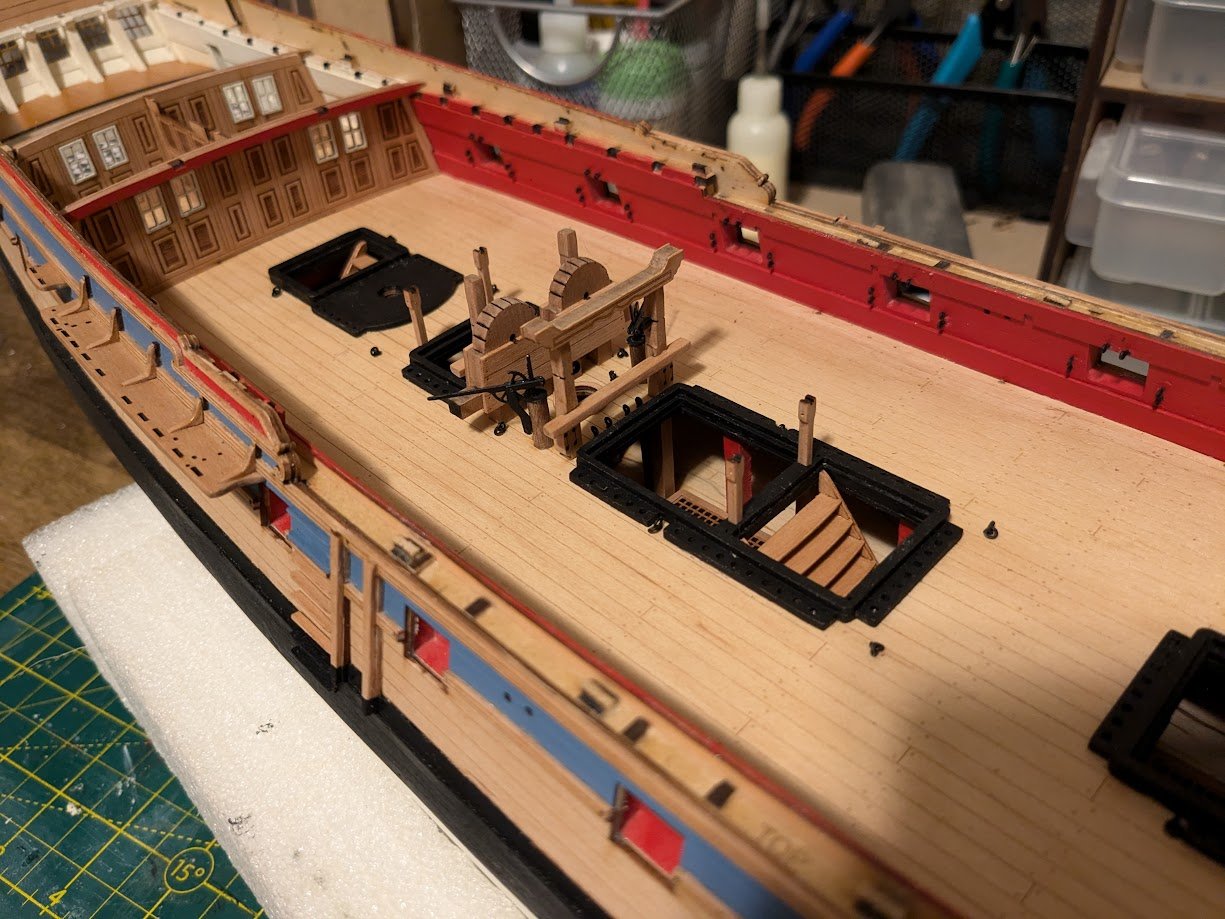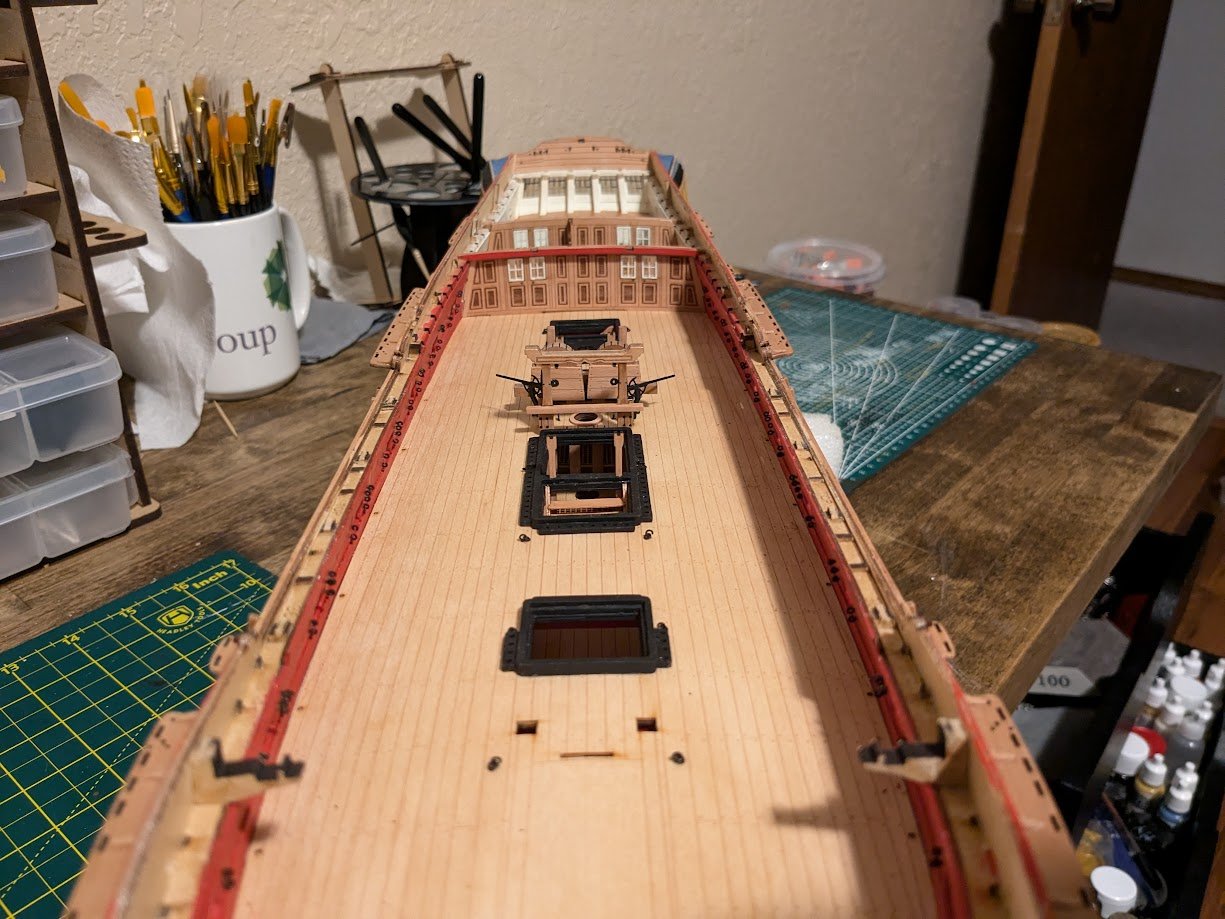-
Posts
329 -
Joined
Content Type
Profiles
Forums
Gallery
Events
Everything posted by brunnels
-
I never even considered a jig to rig the cannons up, I may have to steal your idea. So you rig them on the jig, unhook the hooks from the jig, and glue and hook them onto the model?
- 422 replies
-
- Vanguard Models
- Sphinx
-
(and 1 more)
Tagged with:
-
Amazing model, I'm bookmarking this thread for when I get around to a Speedy build.
- 53 replies
-
- Speedy
- Vanguard Models
-
(and 1 more)
Tagged with:
-
For medium CA glue i like to use those long nozzles you can get online, they really cut down the flow rate so you don't use too much. Below is an example of some I use. CA Nozzles Lately I have been using thick CA glue more and more as its a little more controllable than Medium CA glue on small parts. For planks I just use the bottle and a smaller nozzle. For smaller more precise applications, I like to pour a bead of thick CA glue in a small cup or piece of plastic, and then dipping from that bead either use toothpicks for less fine work, or these glue loopers which have quickly become a staple in my toolbox. Glue looper
- 177 replies
-
- Sherbourne
- vanguard models
-
(and 3 more)
Tagged with:
-
I think you all are on to something with the weather and wind regarding the doors, it would make sense that the stove would need some protection from the elements considering the gun deck is open. Small update, I have all the wheels on the cannons, and I only lost one wheel to the black hole under my desk so I will call that a win. The only task left on the cannons before gluing down and attempting to rig are the carriage quoins. I haven't touched these yet so I will have to remove the char, sand, paint, and varnish 20 of these as my last step on the carriages.
-
Howdy everyone, happy monday. Here is my progress update from the past few days. My time was mostly spent on cannon duty which means lot of tedious work on lots of very small parts. Luckily the Olympics kept me entertained while doing things like char removal on 80 cannon wheels. But first I installed the water pump handles, and the caps. I'm out of nails so once I receive some more I will pin the caps down with the nails per the instructions. I also added the rope railing around the steps. I'm not sure if I am going to keep the rope fairly tight, or if I should add some droop to the lines, I'm thinking a little droop will look more natural. While I am waiting on more nails to come in the mail for the deadeye chain plates, I decided to do some work on the cannons. Working on the guns always gives me more respect for you builders who do larger ships with more guns. Each cannon just has so many pieces and lots of small pieces takes time no matter how good the kit design. Carriages painted ready for installation of the guns. When I first saw the design of the carriages I wasn't sure If I would like the cap squares being one piece with the carriage side. But after putting these together I must say, doing a little detail painting on the cap squares with some black paint is FAR easier than fiddling with some super small PE pieces. I really like this design and once painted you don't even notice that they are one piece. Cannons painted Cannons installed on the carriages. Cannon cross bars, and 7 eyebolts installed. Next step will be touching up the eyebolts and crossbars, and then installation of the wheels.
-
Amazing model, I had to do a double take when I saw how massive it really was, the size of some of these kits really gets lost in the macro haha.
-
Can't go wrong with any Vanguard kit, plus the Duchess is a beauty. I look forward to your progress.
- 207 replies
-
- vanguard models
- Duchess of Kingston
-
(and 1 more)
Tagged with:
-
Upper Frieze's: Finished the upper frieze work, these were quite a bit smaller than the lower frieze patterns, so It was hard to do a ton of shading and highlights without it looking like an absolute mess. So I kept it fairly simple on these, they don't look the best on macro, but they do look acceptable when viewing from normal viewing distance. The upper patterns on the bow are very small, so these only got a very simple Ochre Yellow on top of Ochre Brown base. Lastly I painted and glued in the 4 cleats that go in the bulwarks on the gun deck.
-
For my Sphinx I printed mine on some 200g brochure paper I found at work. I had the same thought about applying some varnish on top, but it ended up making the lines on the paper bleed and not look good. I used a laser printer, so not sure if paper type or printer type would make a difference on preventing the colors from bleeding. Here is how it looks on my sphinx.
-
Howdy everyone, thanks for the likes and compliments on the frieze work it really boosted my painting confidence. While working on the frieze work between coats I have also been working hard on equipment on the gundeck. Ships stove: Assembly is very straight forward, assemble to wood frame, glue on the brass PE and then paint. I used Vallejo black mixed with a little steel pigment powder. I have never really used pigment powder, so I am not really sure if I used too much or too little, but I am happy with how the stove turned out. I really struggled with painting the bricks, I have discovered mixing paint is a skill I am not very good at. After probably a dozen attempts I got a brick color I was happy with. Next I used a light grey wash for the brick mortar. I have never used washes before, and I never really figured out how to use it properly. No matter what I did I always seemed to remove the wash in the cracks when trying to remove the excess wash. Finally I just used a 000 paint brush and painted it in the cracks as best I could. The doors in front of the stove. Can someone explain the purpose for these doors, because their purpose doesn't really make sense to me. The doors were pretty straight forward, glue two sides together add the hinges and door handles and glue on the frame. The frame I had some issues with as it was very fragile and I snapped it in a couple places. I repaired It best I could with a piece of 1x2mm wood I had, but some of the frame is still missing above the closed door. Capstan: The capstan looked like it would be very fiddly to put together, but it was actually a very easy process that went together in no time. Here is how the ship looks as of 7/30/24, hopefully I haven't missed covering anything.
-
I have started to work on the frieze work. This pretty much is the limit of my artistic abilities at this scale, I've always had lots of respect for miniature painters and this just increased that respect even more. It took me several days and tests to decide what colors to use and how to use them. I ended up with a base of Ochre brown, followed by Ochre Yellow as a main color with highlights of Ivory white and red. I found that at this scale you really have to keep it simple or it starts to look really messy so I decided to use no more than 4 colors. It took a while to learn how to highlight and shade on these really small parts, if you look at it with a macro it may look messy, but from a couple feet away I am very satisfied with how it turned out. I still have the upper frieze work which I am going to work on this week. Those will be a bit harder as they are figures and the patterns at the bow of the ship get incredibly small, so I will probably have to minimize the colors even more on the smaller stuff. Here is my lower frieze work. The PE around the gangway steps didn't fit, so I will have to hand paint those portions.
-
Looks great, I really debated hard with myself on using gold when I started the kit. Are you using the Vallejo Liquid gold? I tried using their Liquid Copper paint and haven't had much success with it.
- 422 replies
-
- Vanguard Models
- Sphinx
-
(and 1 more)
Tagged with:
-
I like your 3 piece cheeks, I wish I would have thought of that method lol. Red and blue on the head looks great.
- 422 replies
-
- Vanguard Models
- Sphinx
-
(and 1 more)
Tagged with:
-
Yes, I started with Varnish just so the paint wouldn't soak into the very thin wood, painted white, and varnished again. By the time it had its finish varnish dried it had curled up quite a bit. I'm not sure if several days between the books was necessary, but I was working on other projects anyway so I just let it sit for that long.
-
Beautiful model all around, I wish I could paint like that, the frieze work is exceptional.
- 562 replies
-
- vanguard models
- alert
-
(and 2 more)
Tagged with:
-
I decided to change things up a bit and started working on the deck furnishings, and interior of the ship. Main Mast Bitt's, Waterpumps These are all pretty straight forward to put together and install. Basically just cutting out the laser cut parts, removing the char, drilling a couple holes, and glue. Great Cabin I decided to paint the great cabin doors Ivory white to match the cabin and leave all the others natural finish with white window frames. These pieces wanted to curl quite a bit whenever they came in contact with glue and paint, so after they were finished I placed them in between a couple heavy books and let them sit for a couple days to straighten back out. Next I painted the Quarter deck frames that are used to hold up the cabin door patterns. I also removed char on the topside. I next glued installed my printed checker floor, and eyebolts in the deck and surrounding gun ports. QG framing and great cabin door patterns glued in place. The water pumps and bitts are finally glued into the deck. Lastly I spent an evening putting in the eyebolts for the rest of the gun ports. It's tasks like this that give you respect for the guys doing ships like Victory with a ton of guns. How the model currently looks.
About us
Modelshipworld - Advancing Ship Modeling through Research
SSL Secured
Your security is important for us so this Website is SSL-Secured
NRG Mailing Address
Nautical Research Guild
237 South Lincoln Street
Westmont IL, 60559-1917
Model Ship World ® and the MSW logo are Registered Trademarks, and belong to the Nautical Research Guild (United States Patent and Trademark Office: No. 6,929,264 & No. 6,929,274, registered Dec. 20, 2022)
Helpful Links
About the NRG
If you enjoy building ship models that are historically accurate as well as beautiful, then The Nautical Research Guild (NRG) is just right for you.
The Guild is a non-profit educational organization whose mission is to “Advance Ship Modeling Through Research”. We provide support to our members in their efforts to raise the quality of their model ships.
The Nautical Research Guild has published our world-renowned quarterly magazine, The Nautical Research Journal, since 1955. The pages of the Journal are full of articles by accomplished ship modelers who show you how they create those exquisite details on their models, and by maritime historians who show you the correct details to build. The Journal is available in both print and digital editions. Go to the NRG web site (www.thenrg.org) to download a complimentary digital copy of the Journal. The NRG also publishes plan sets, books and compilations of back issues of the Journal and the former Ships in Scale and Model Ship Builder magazines.





